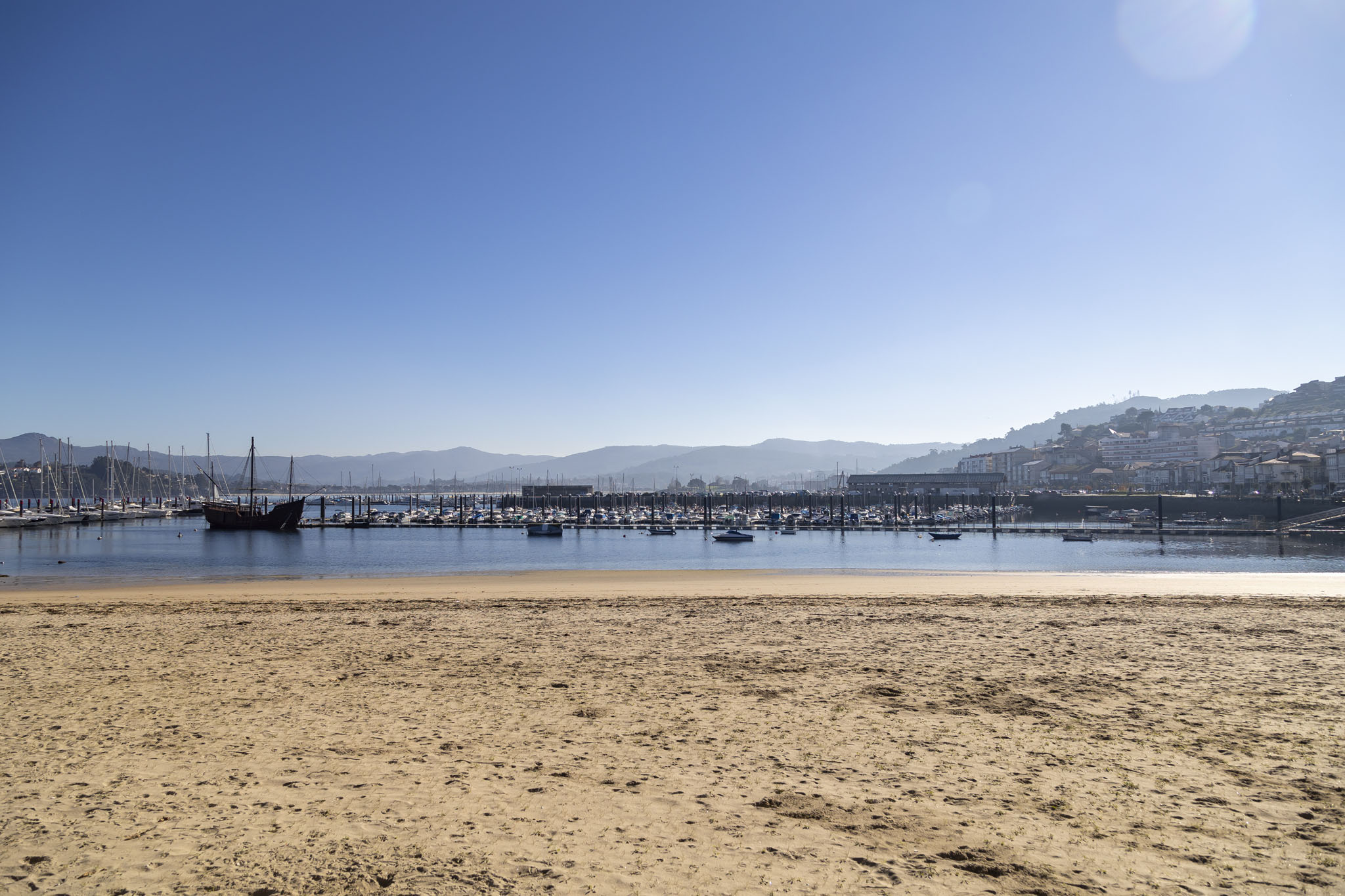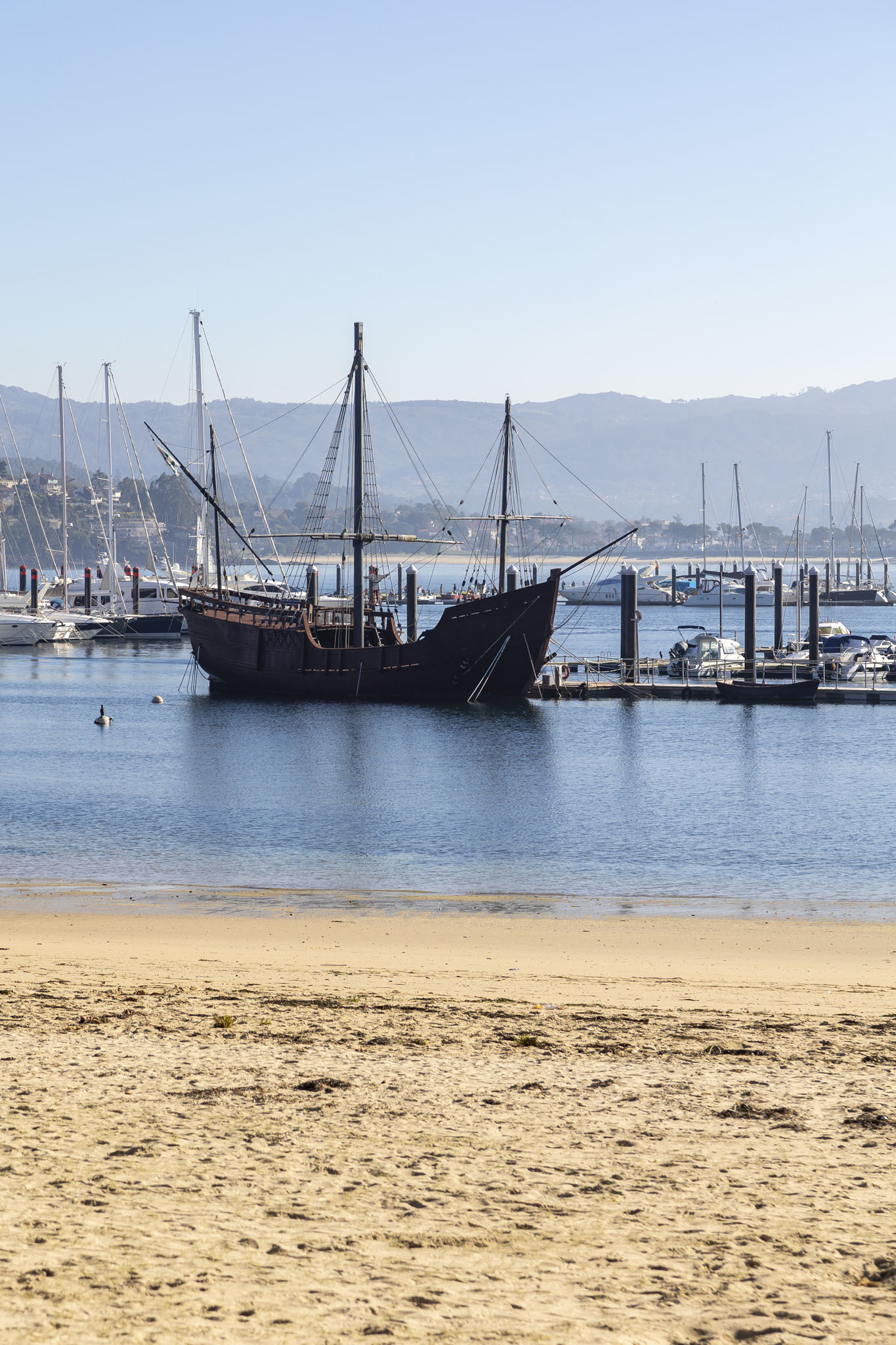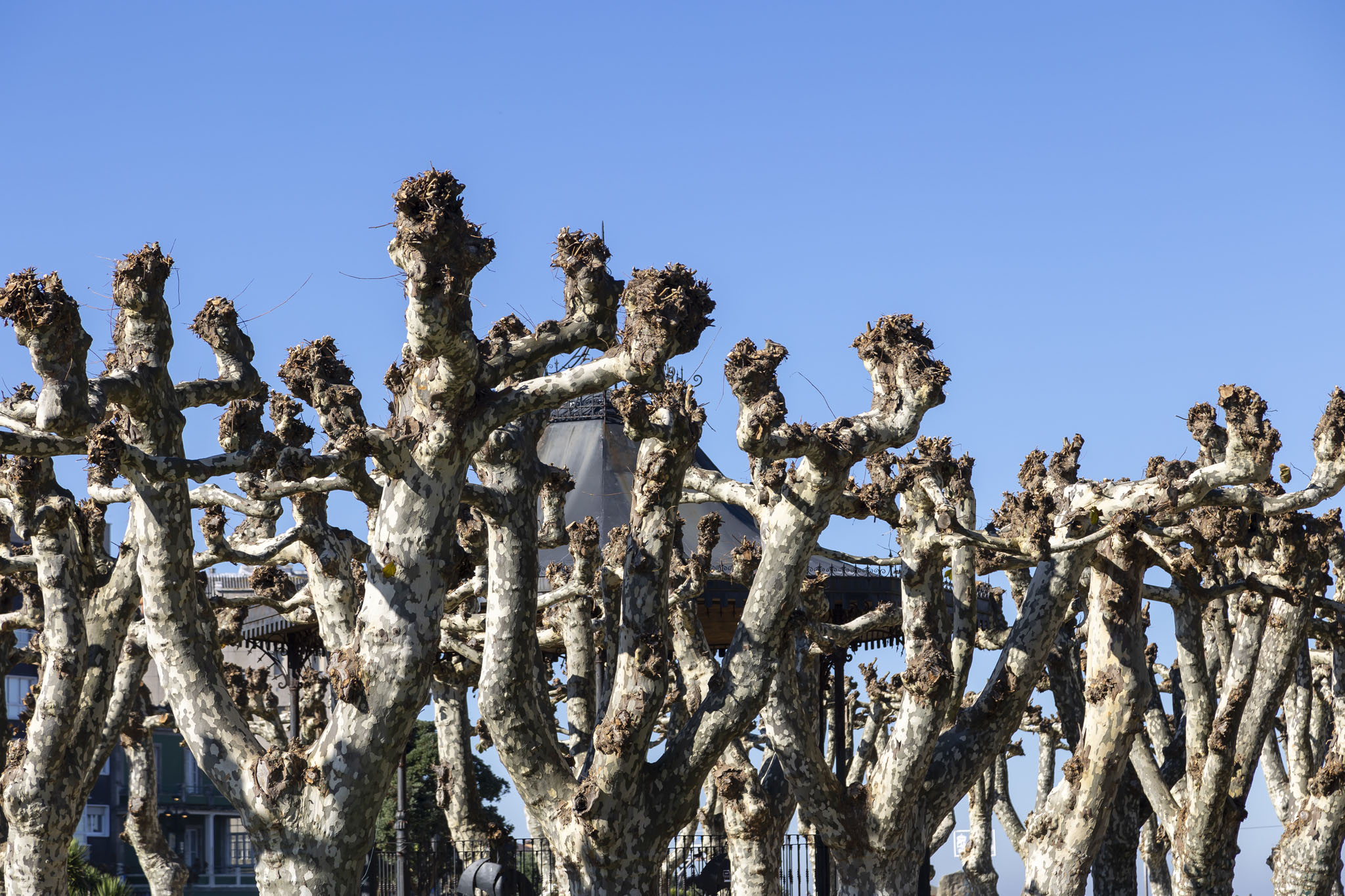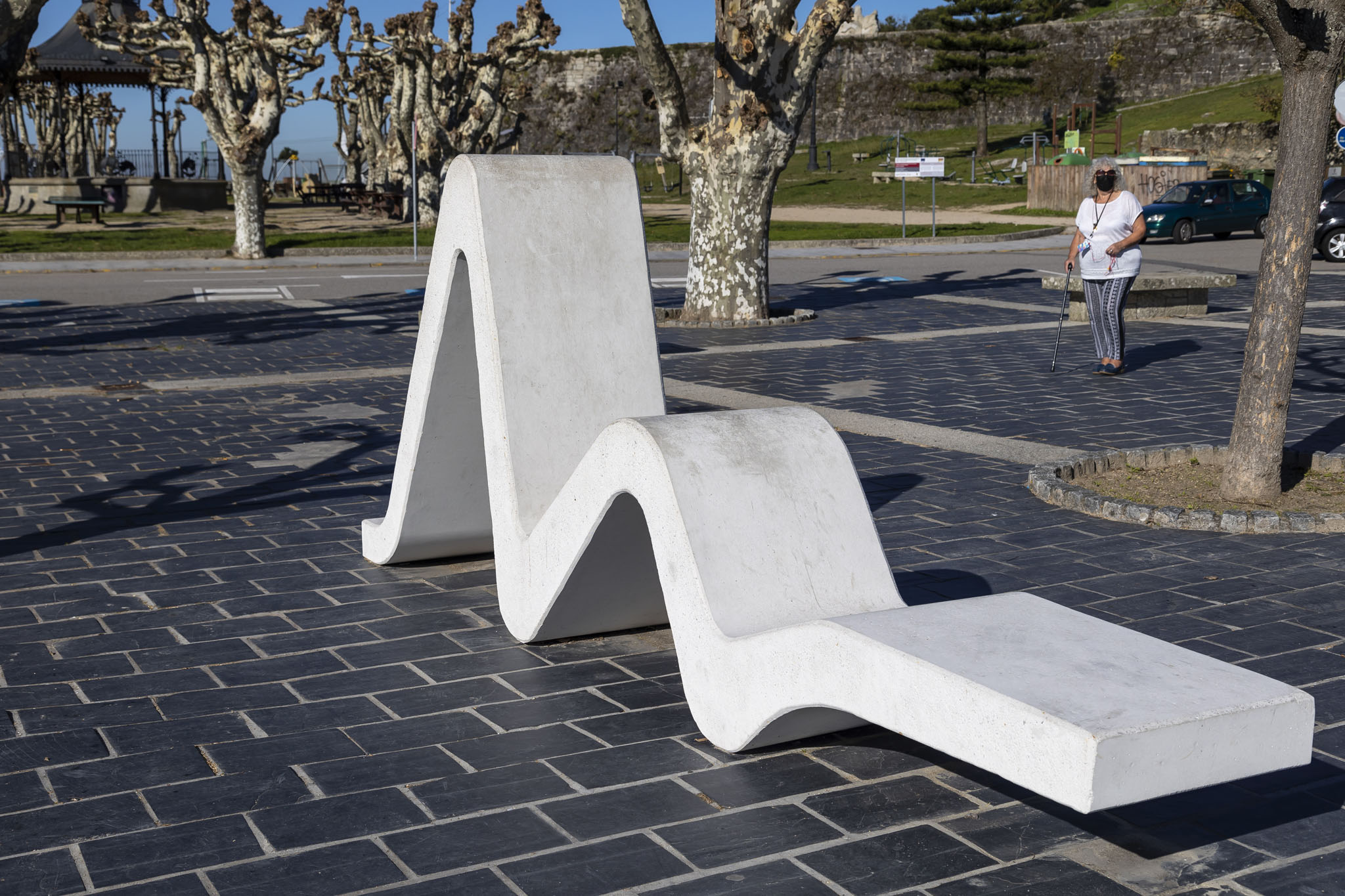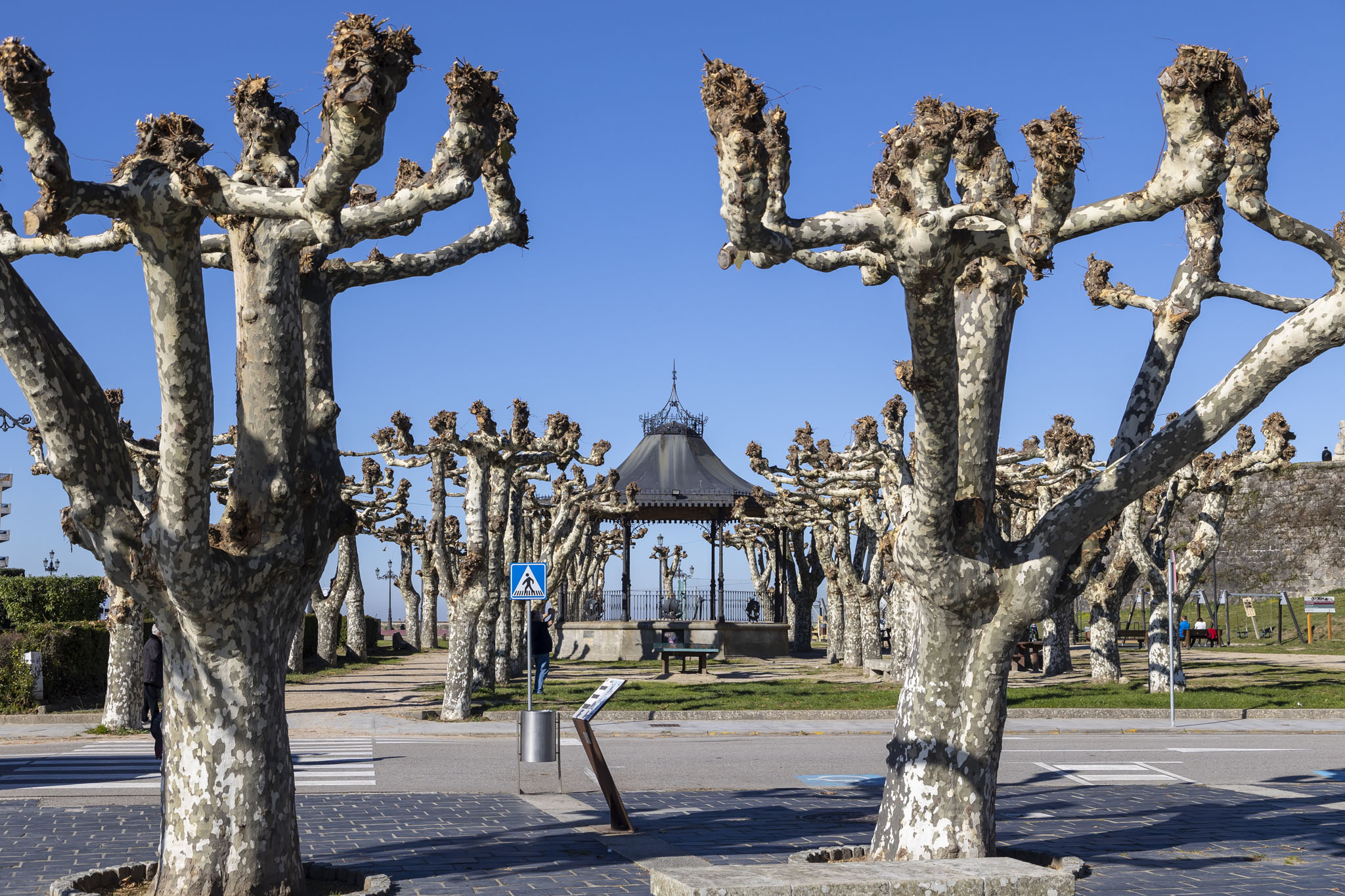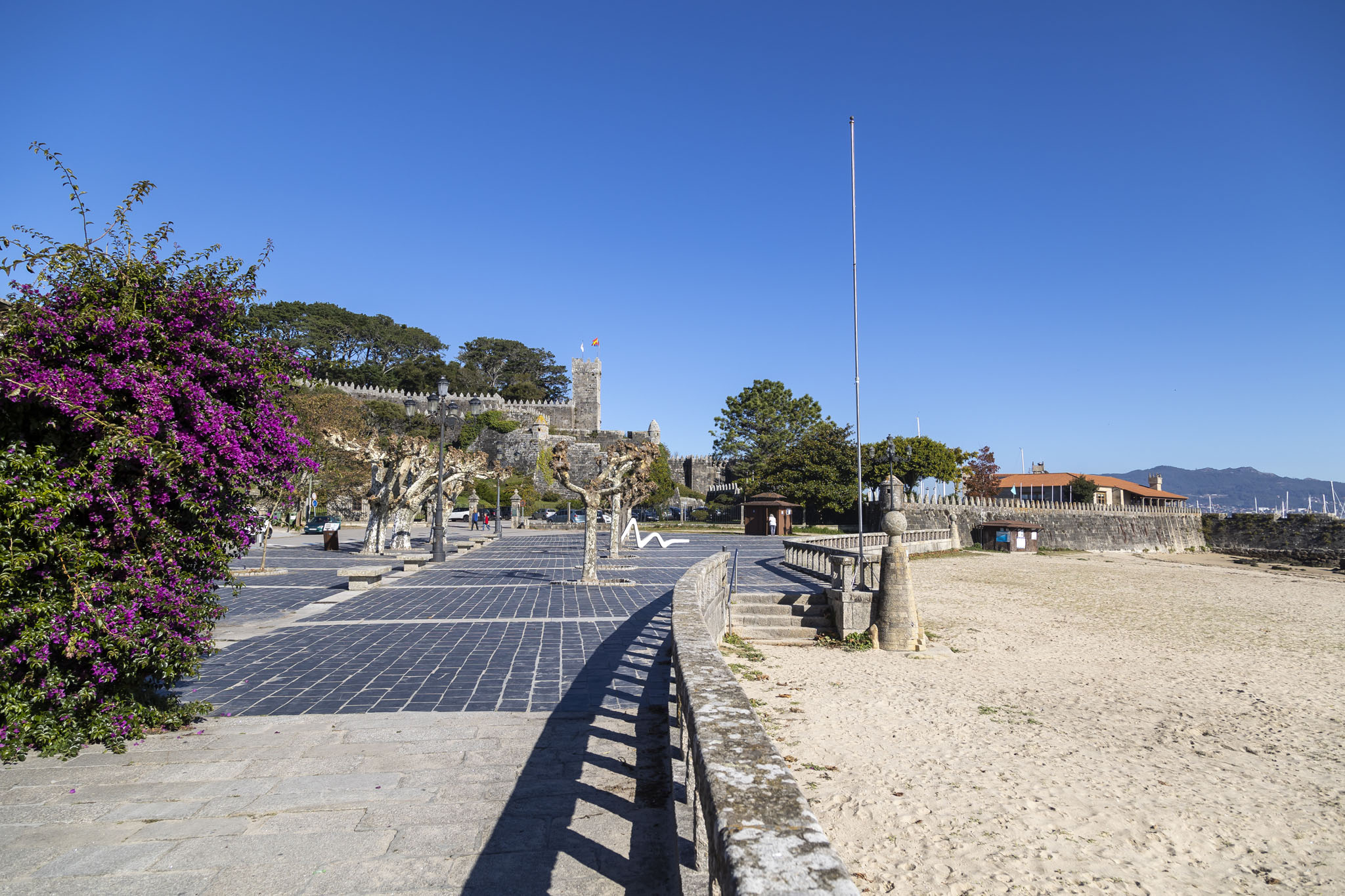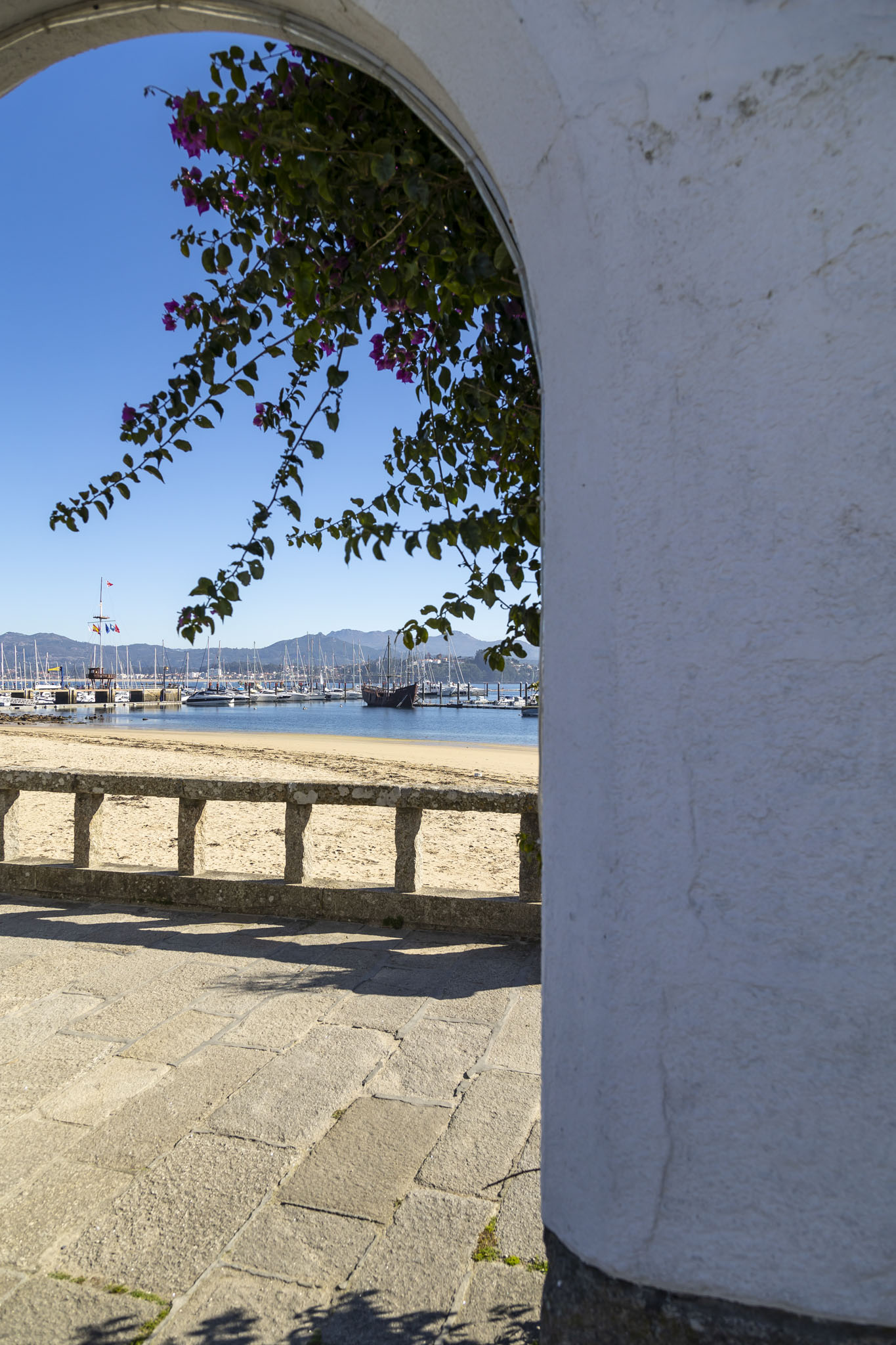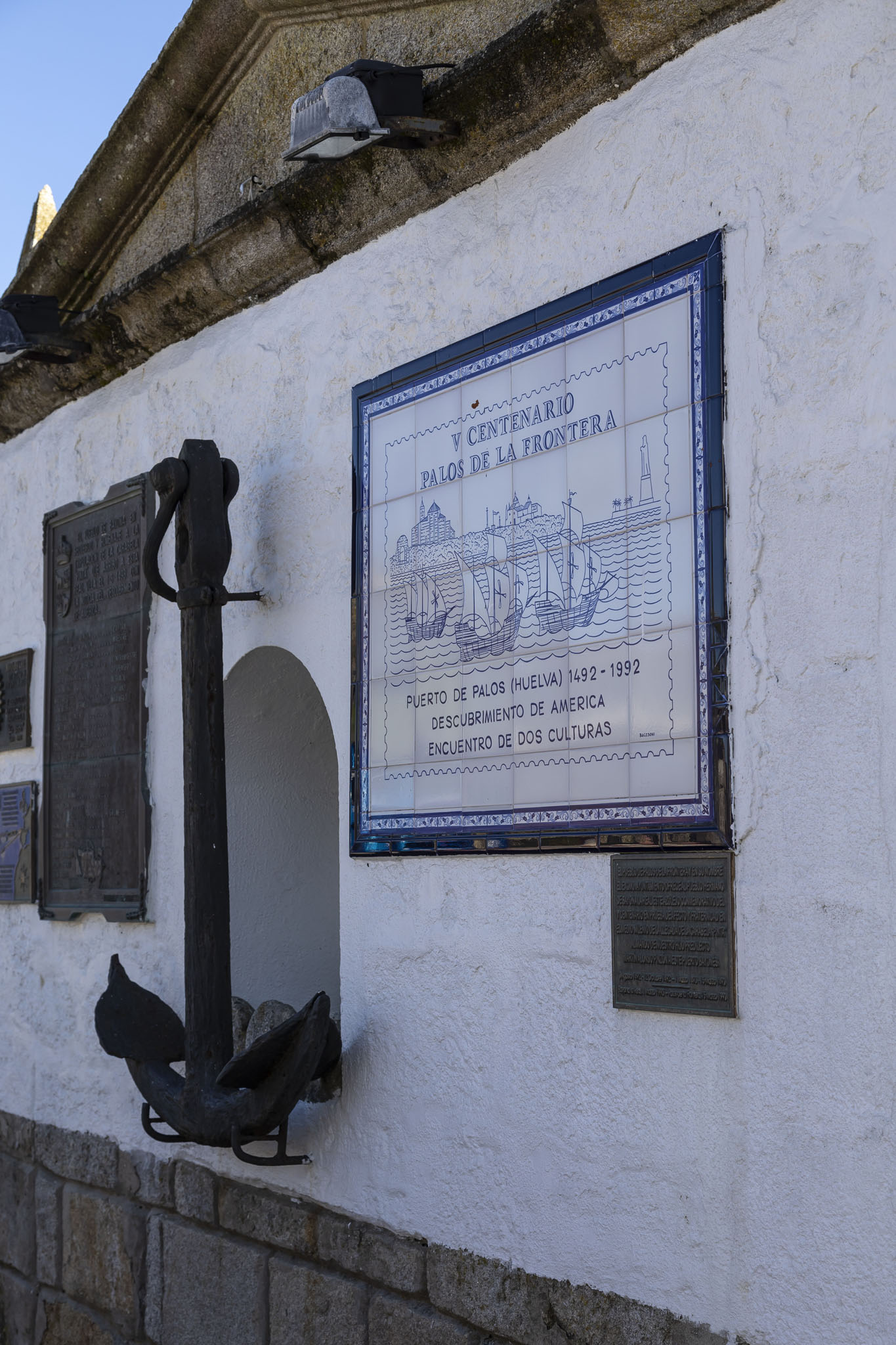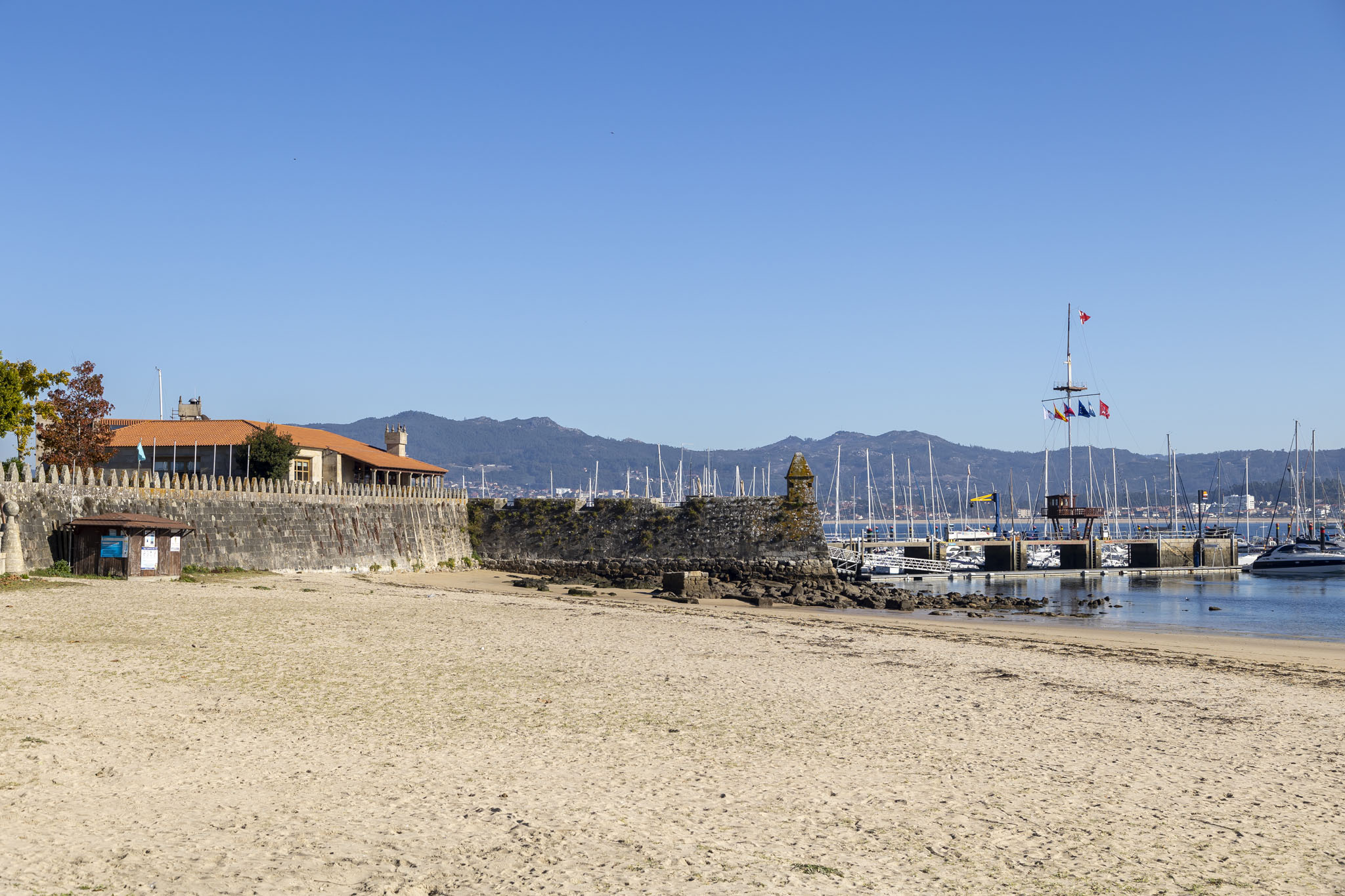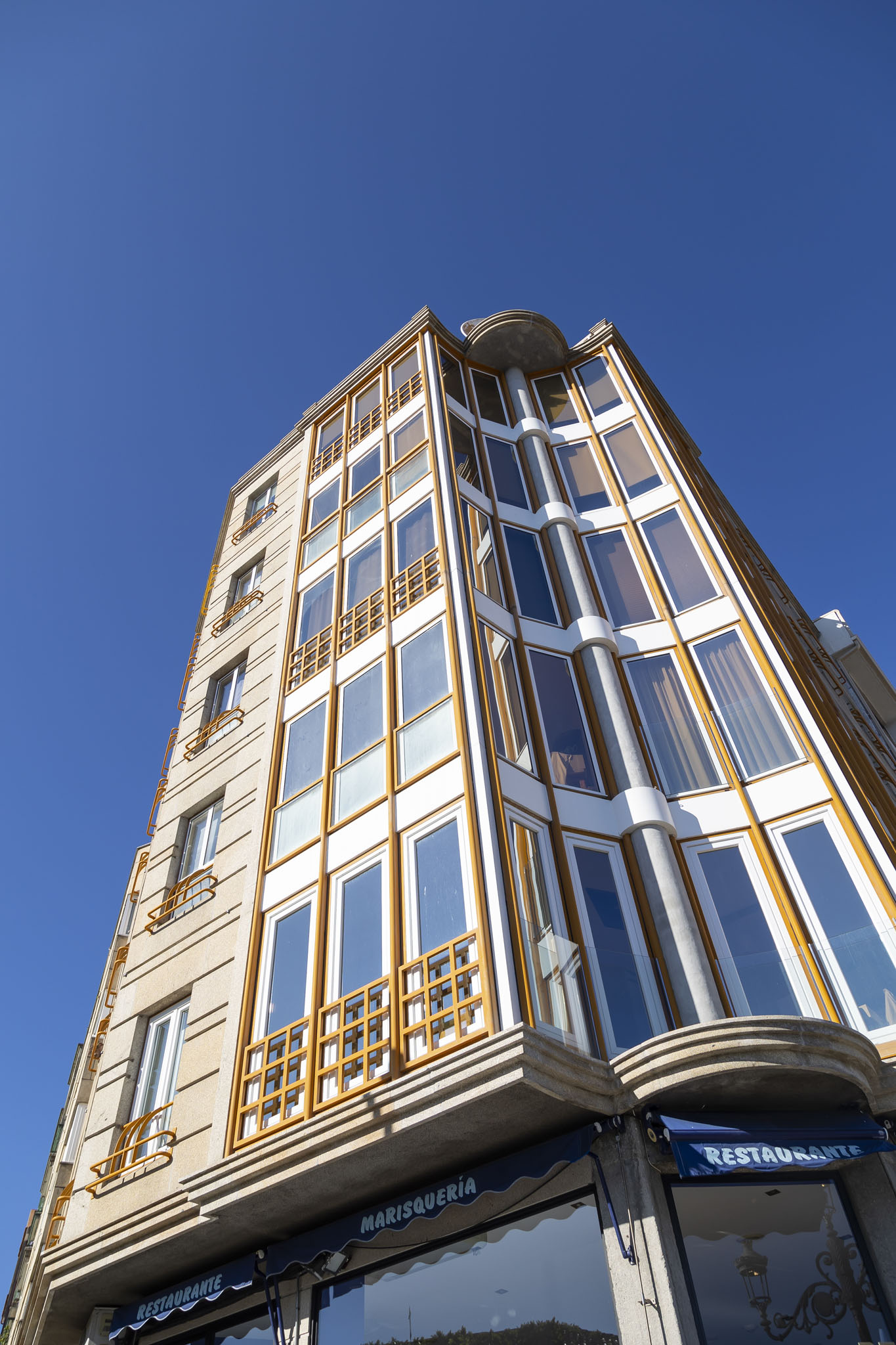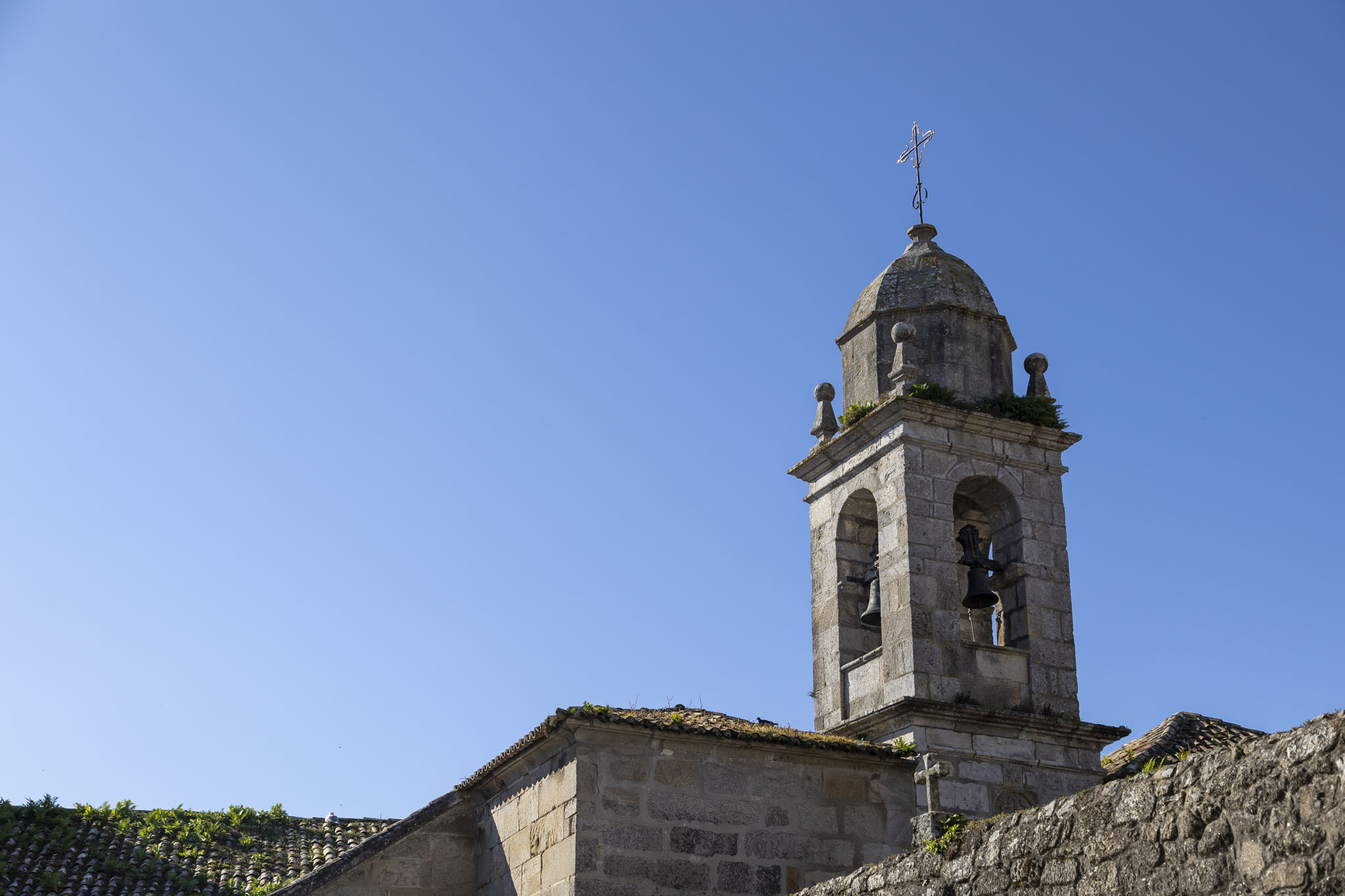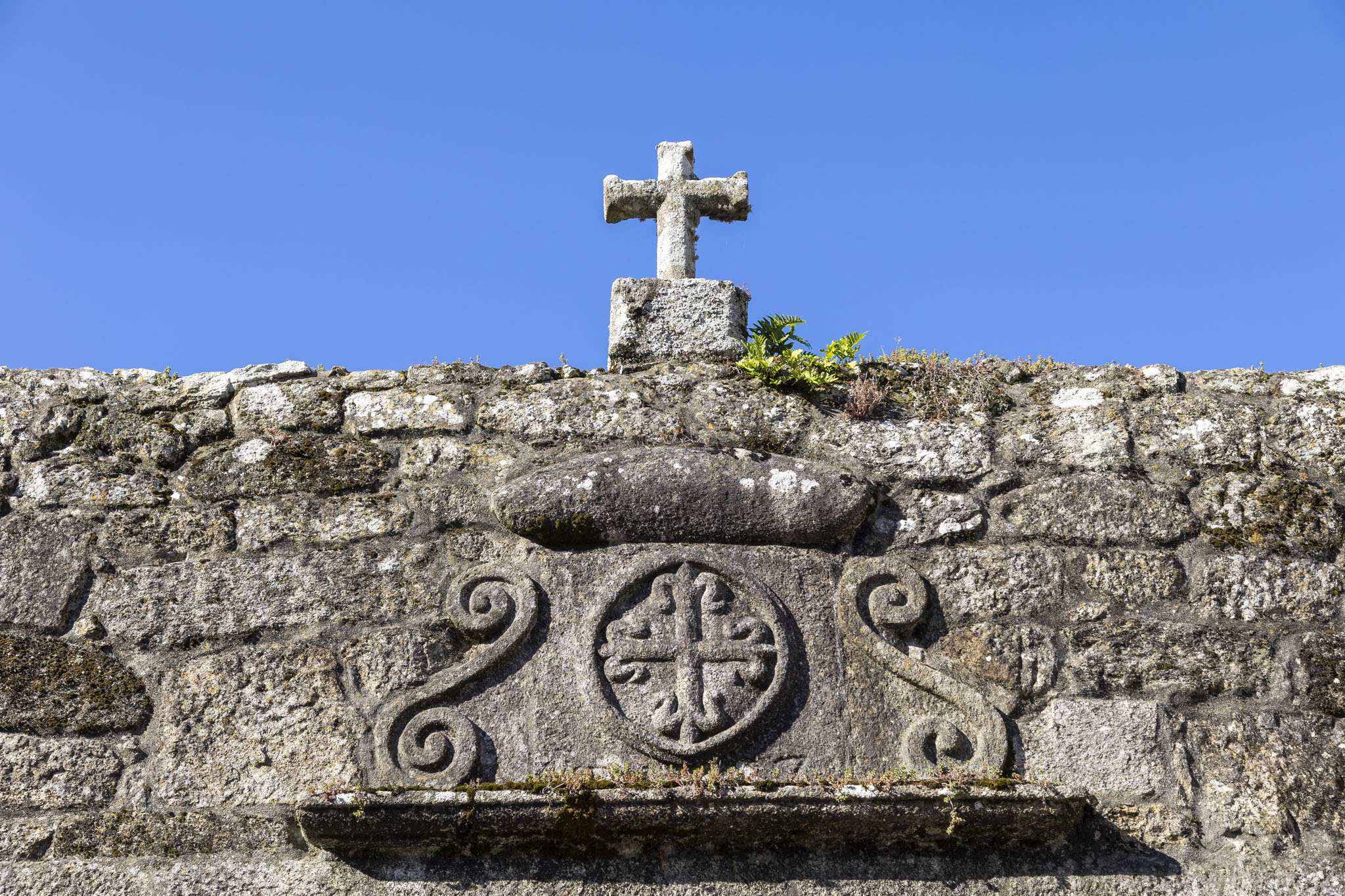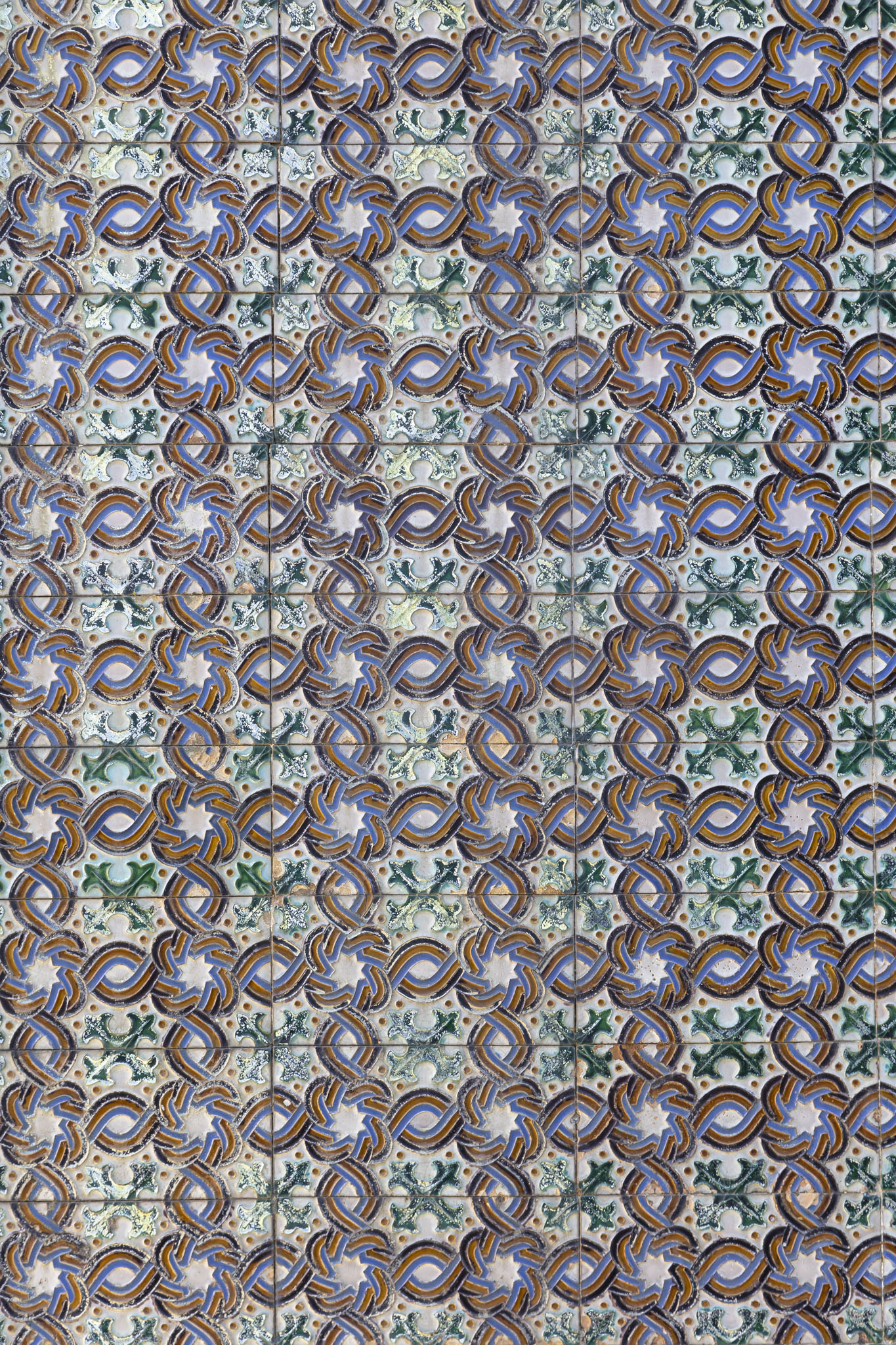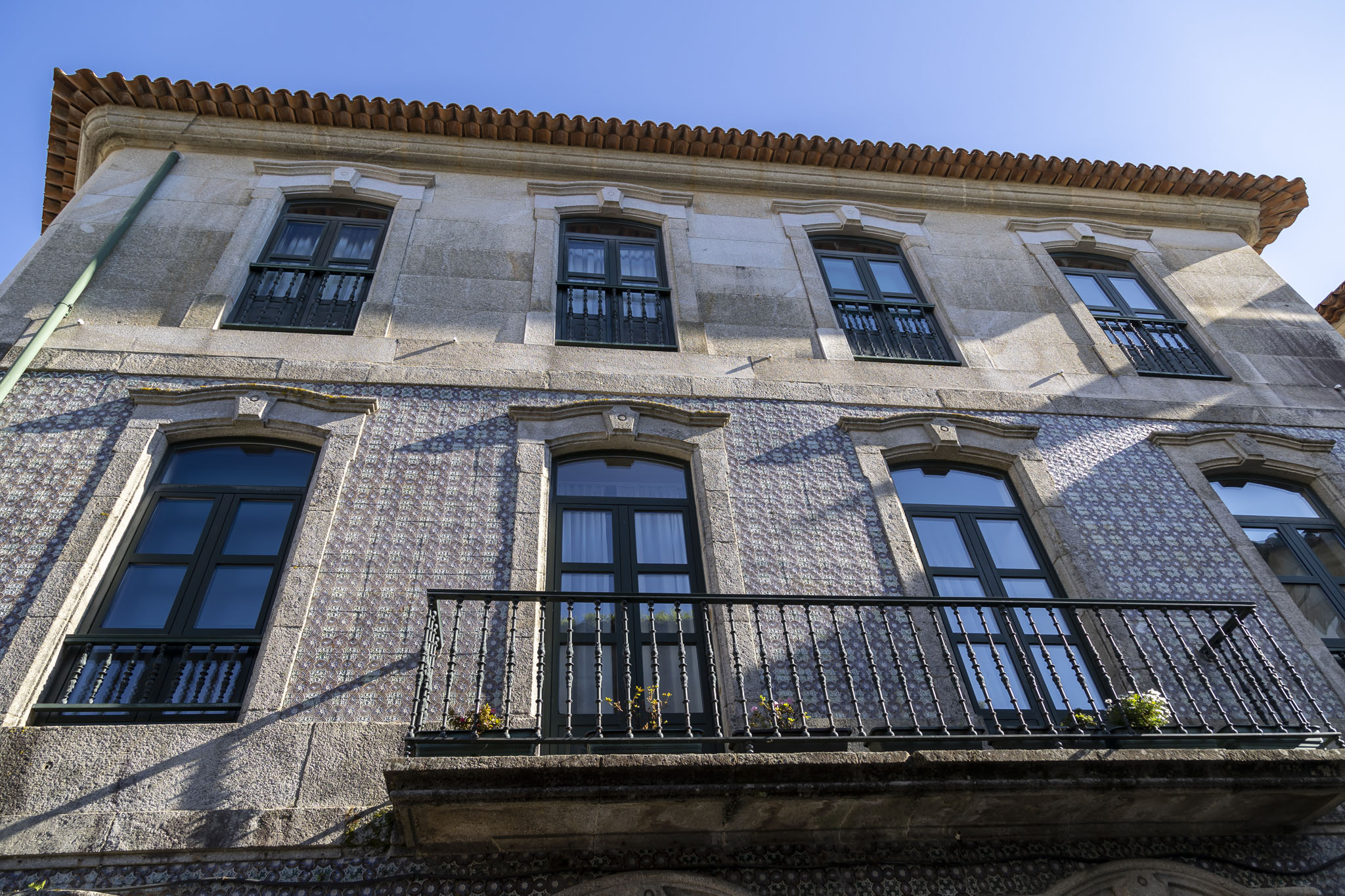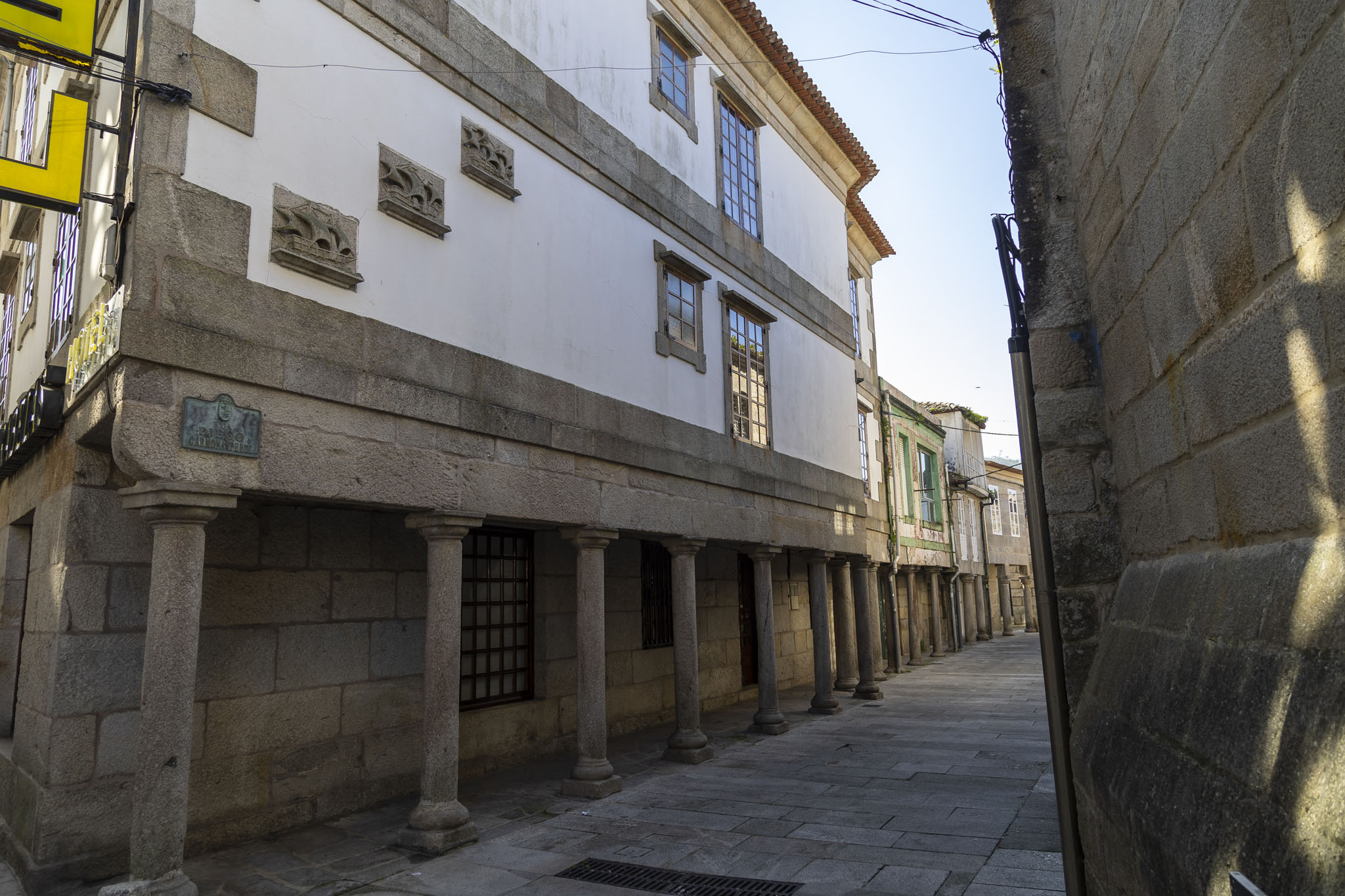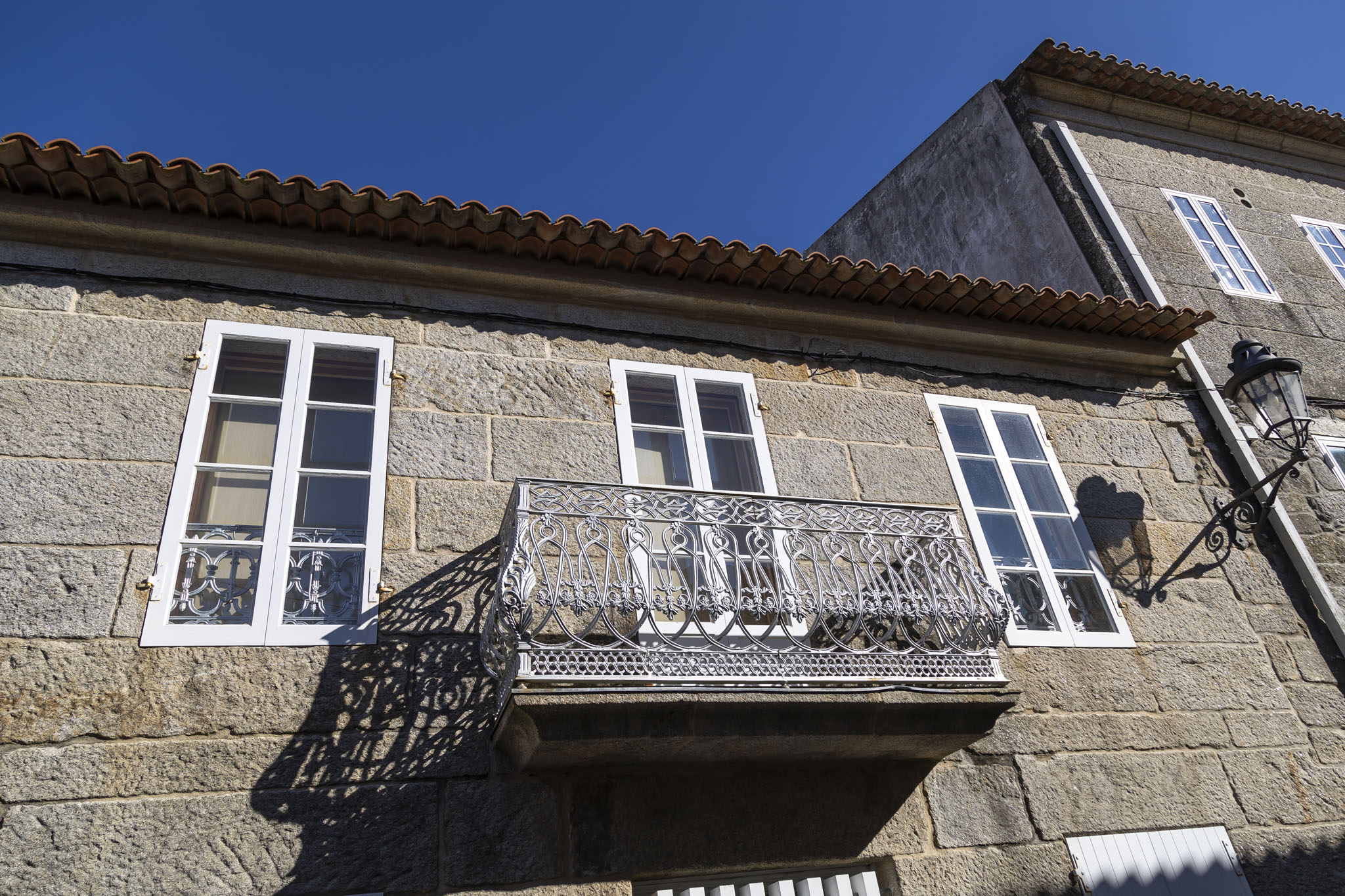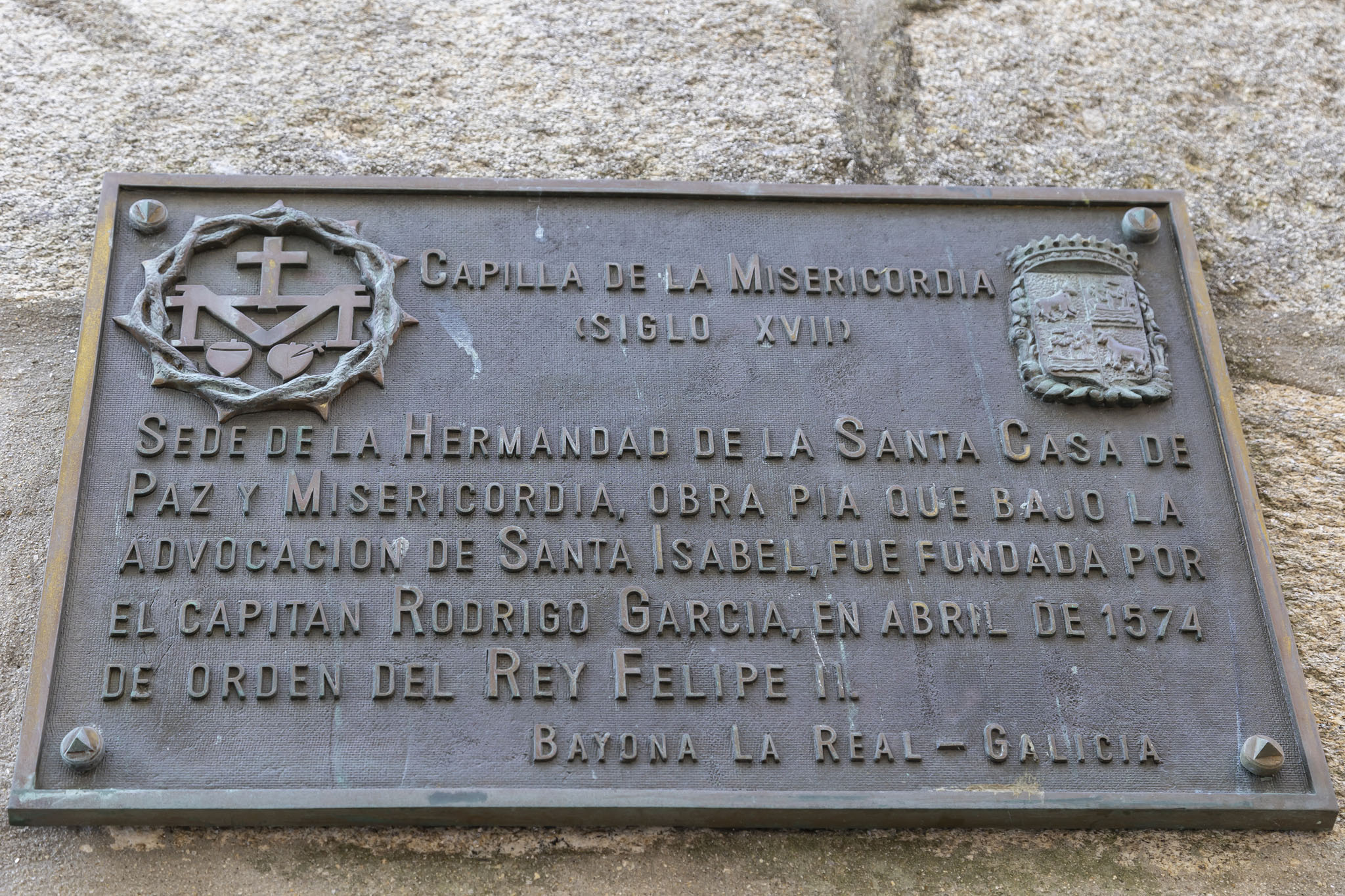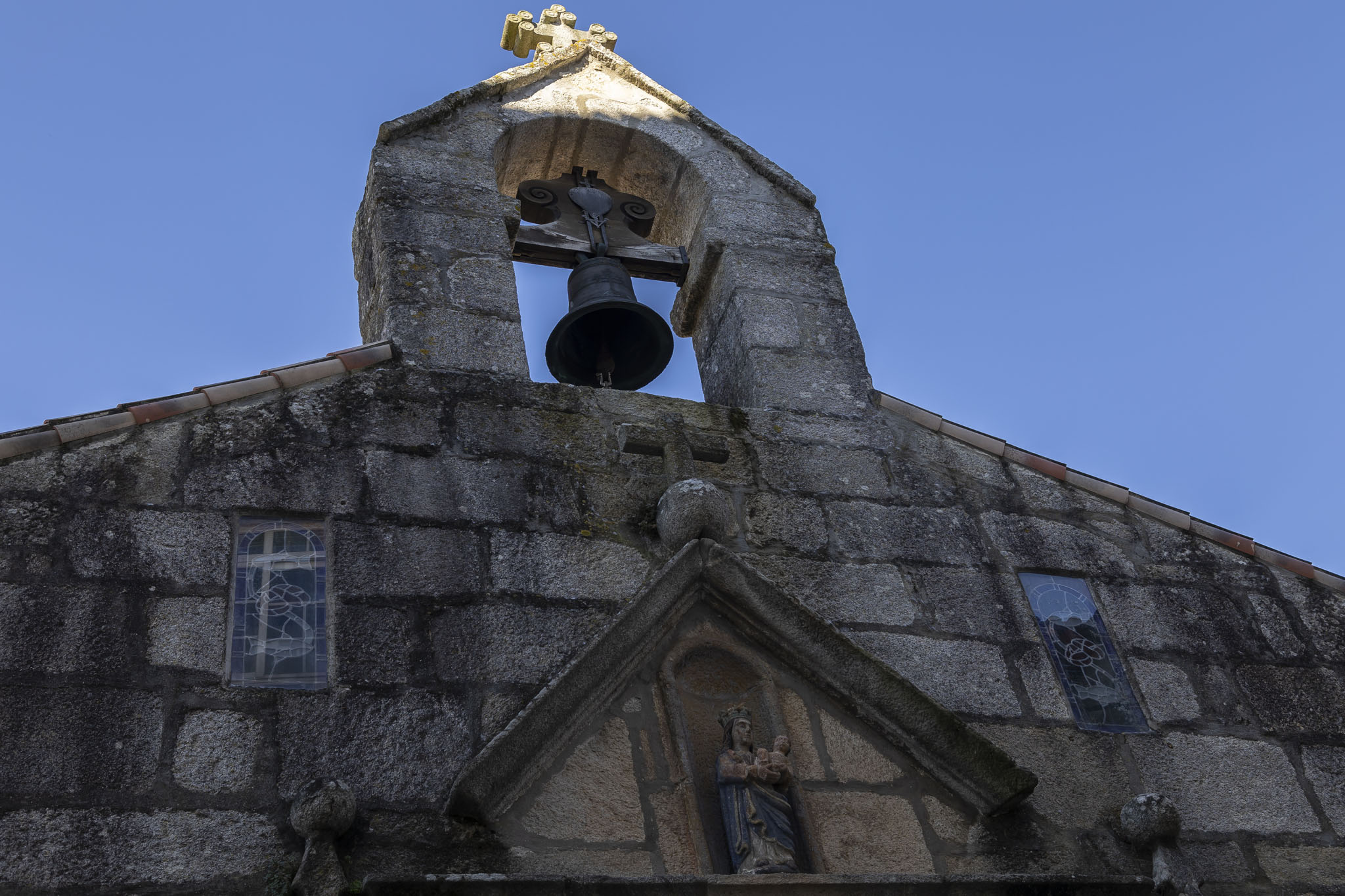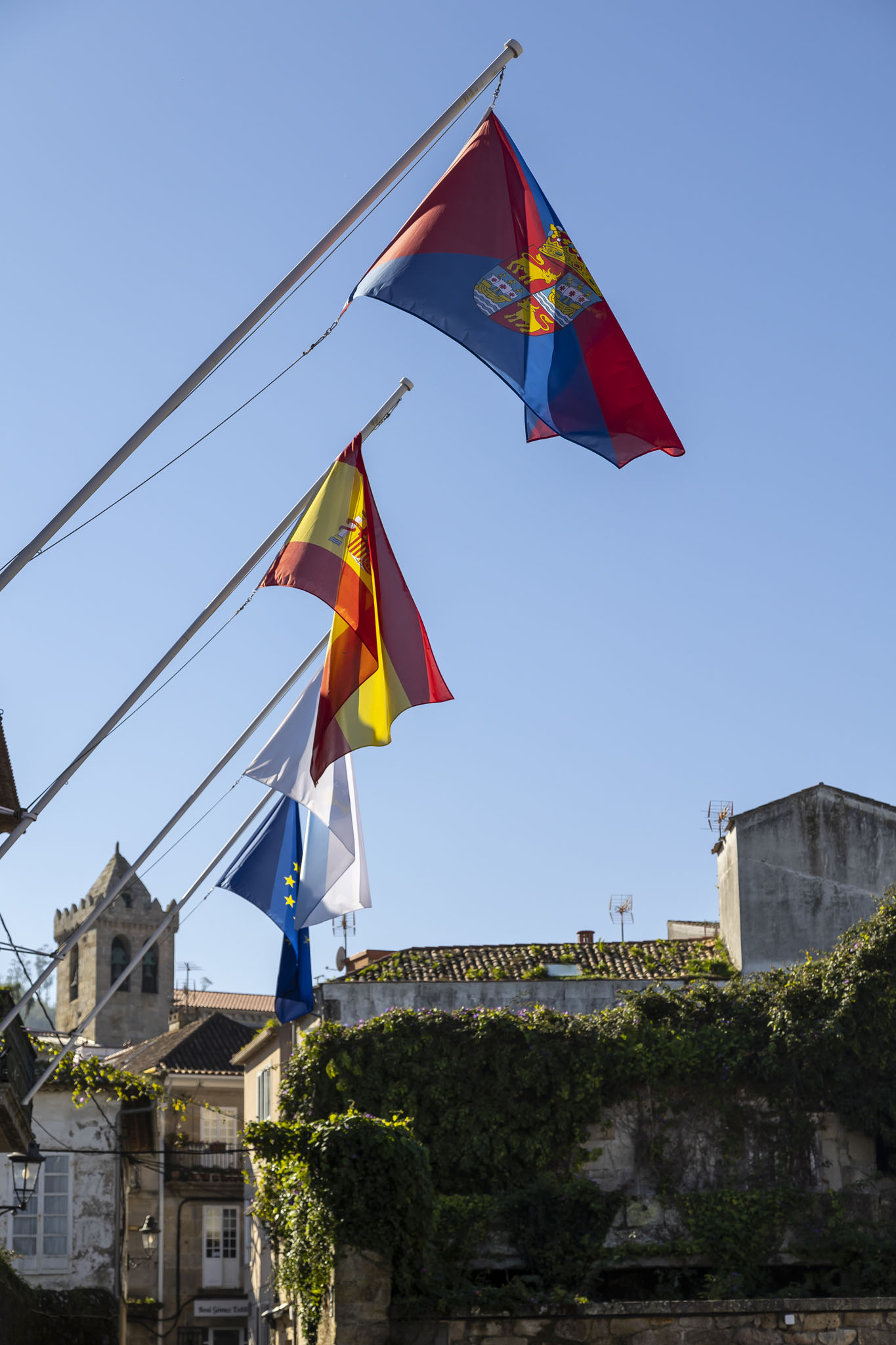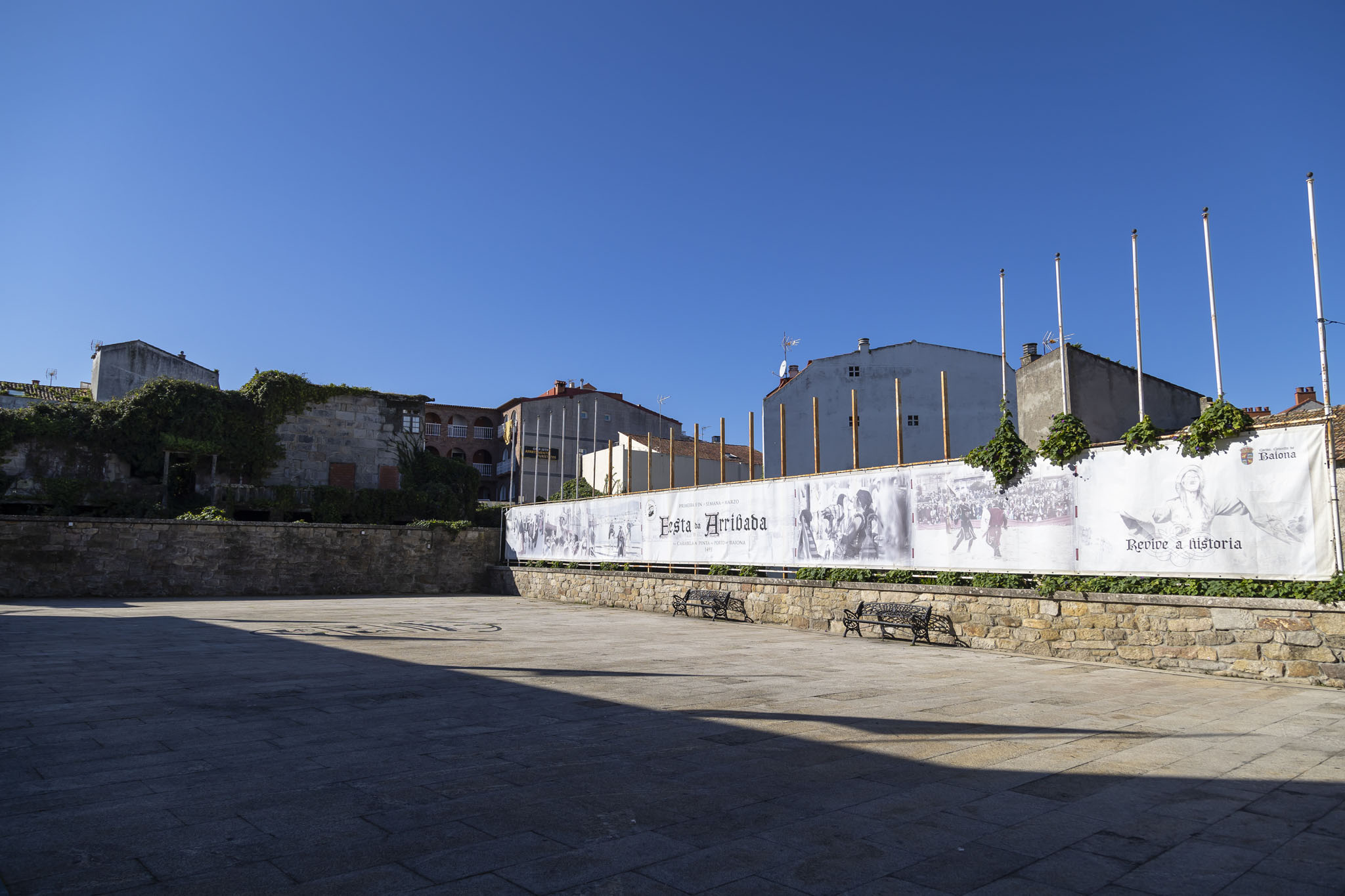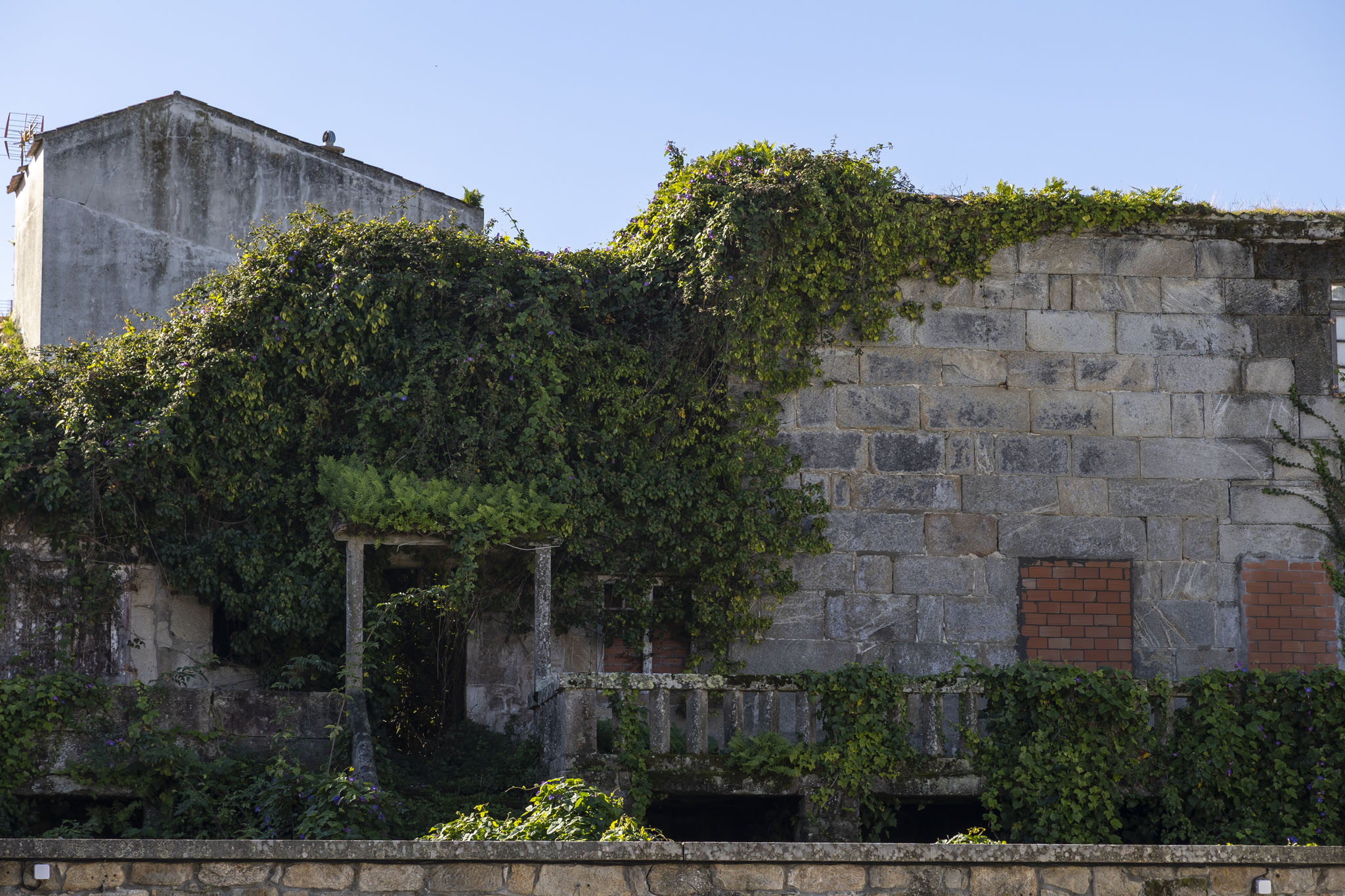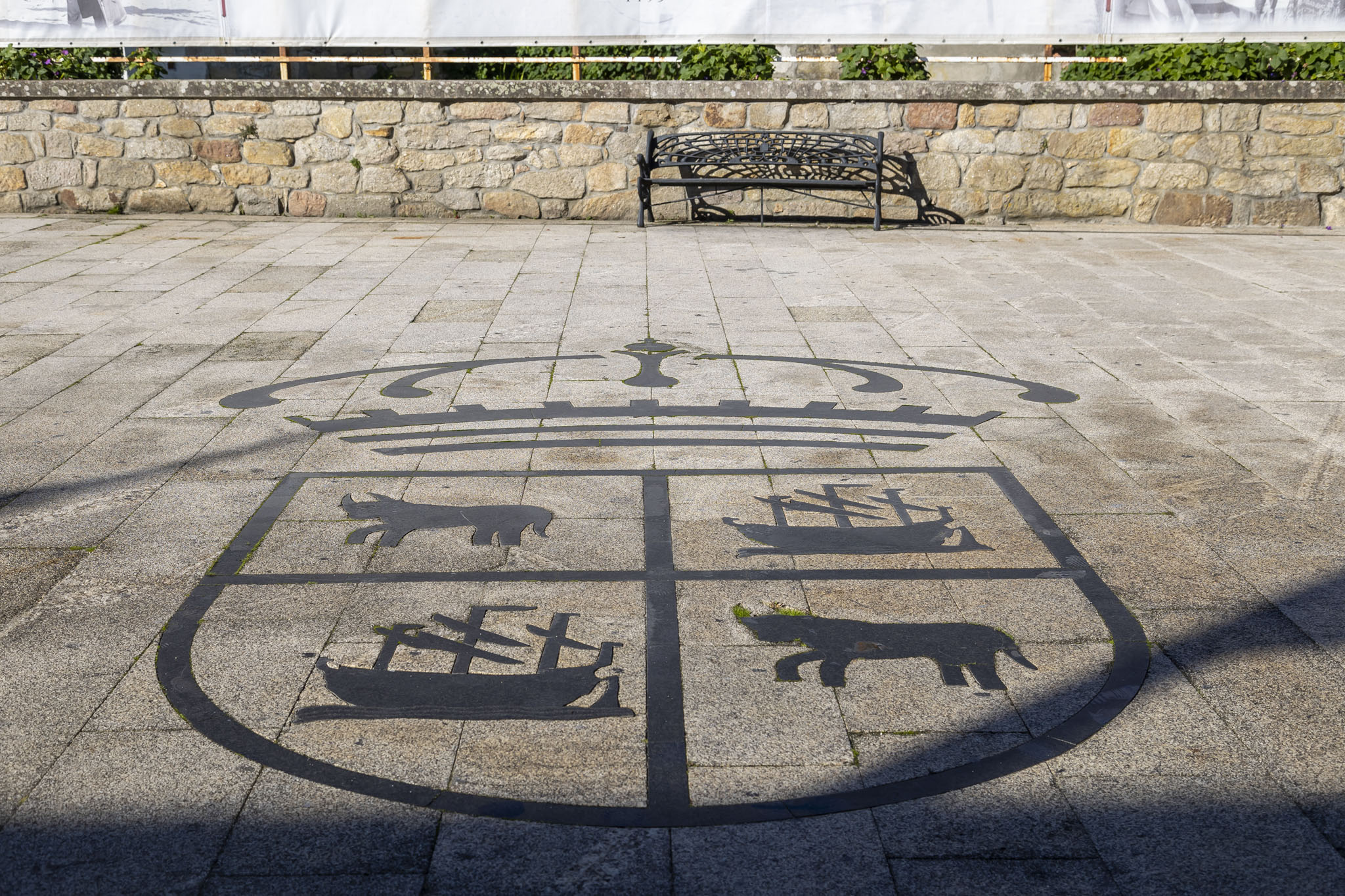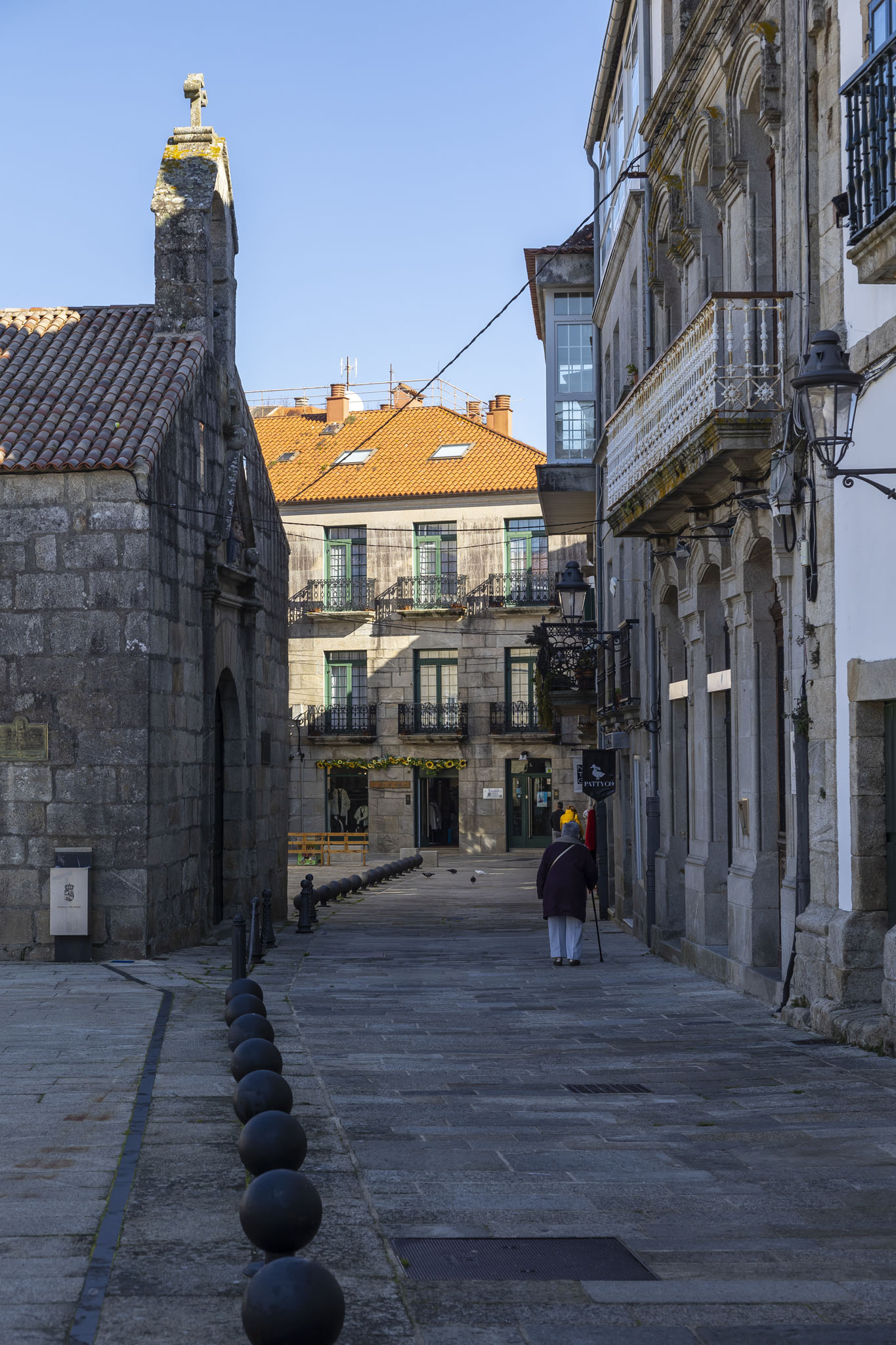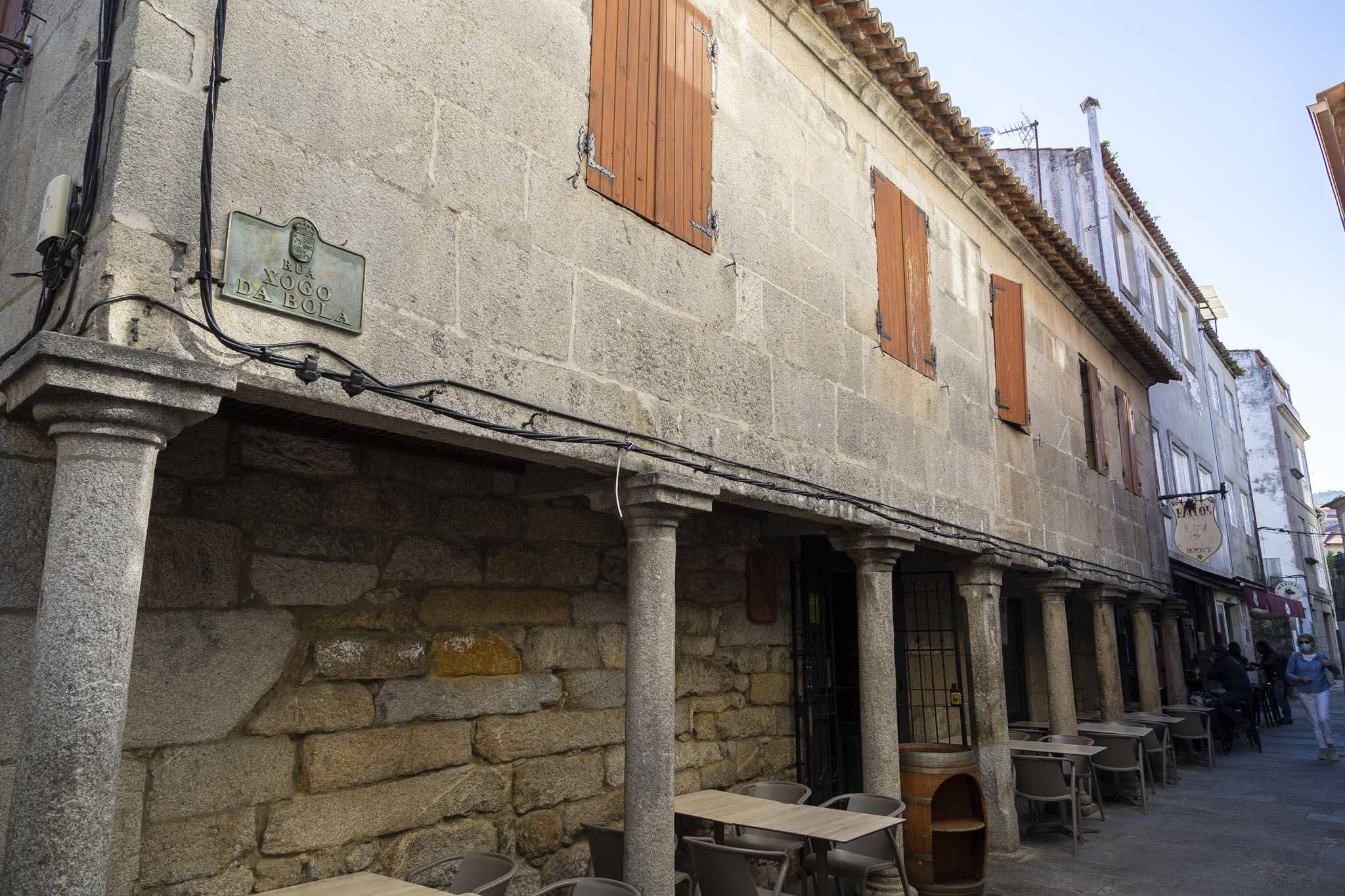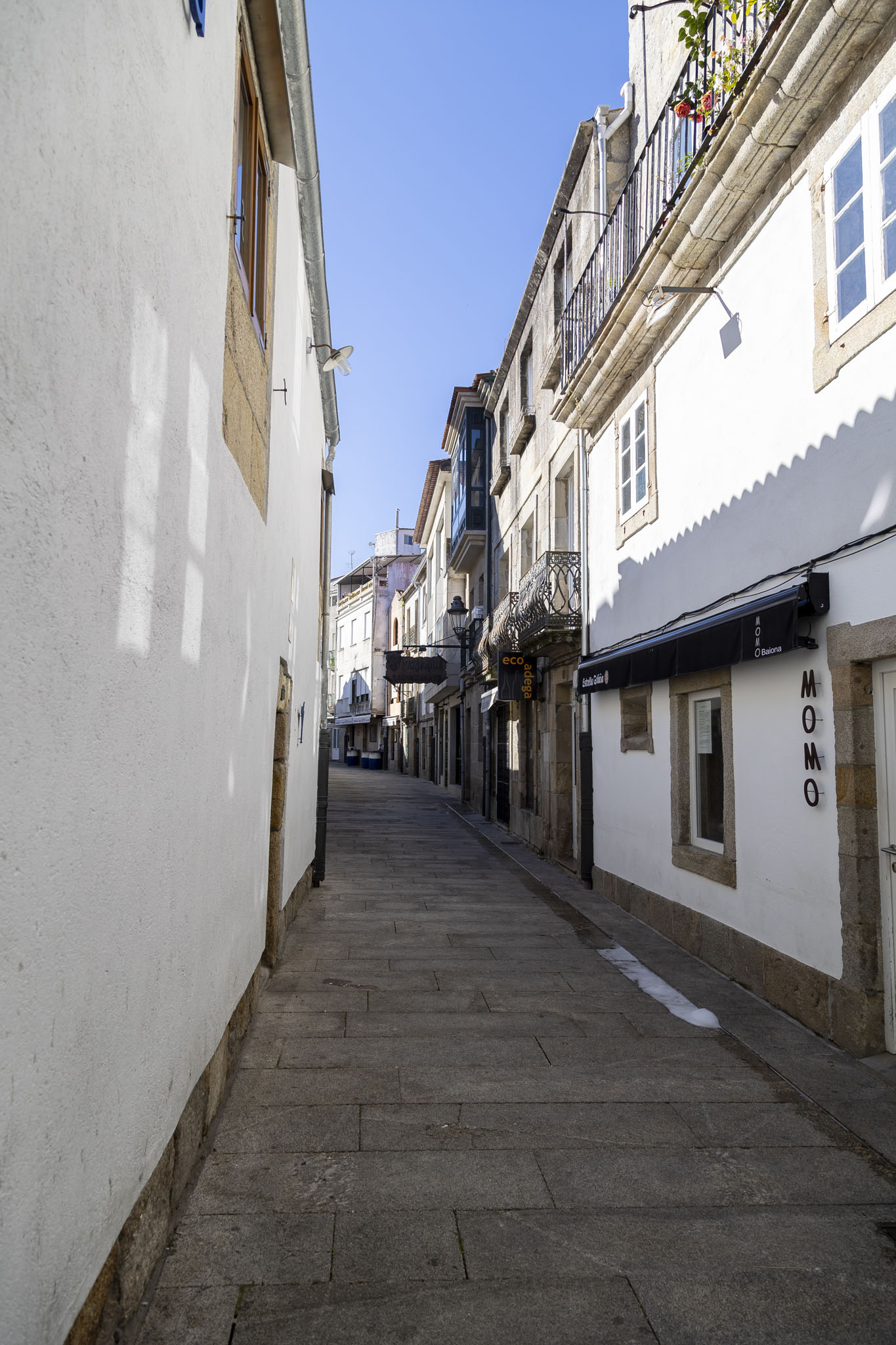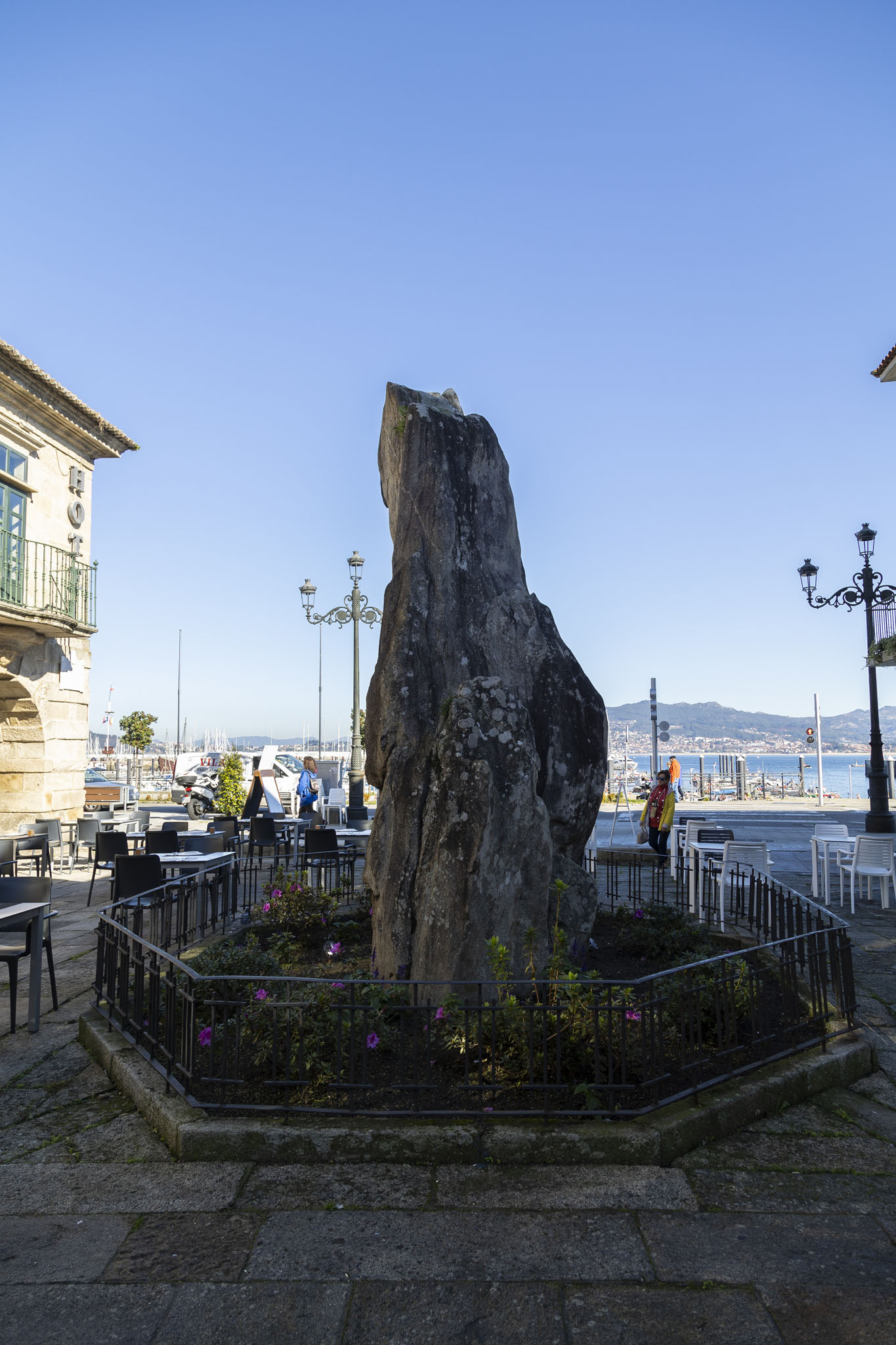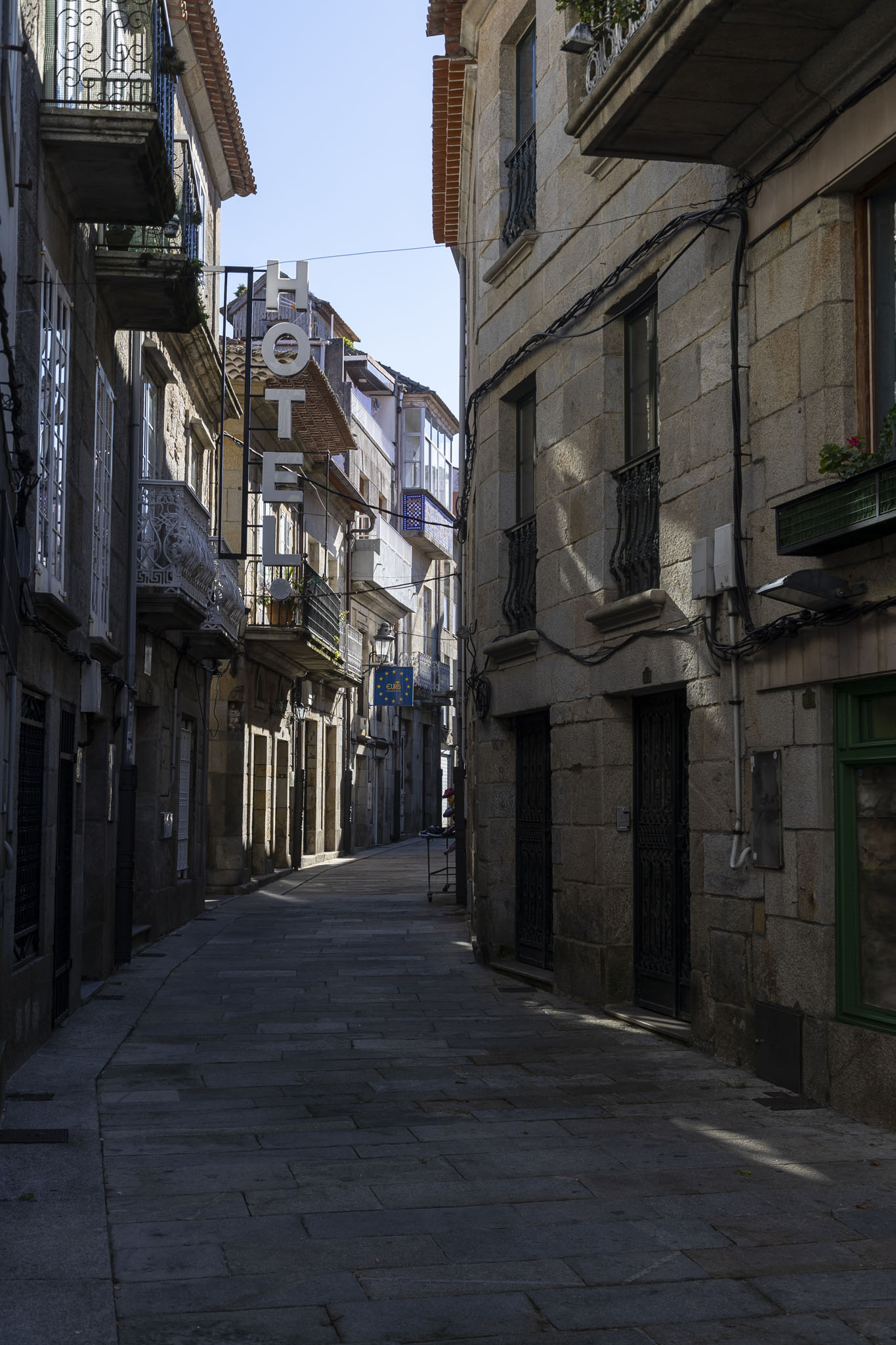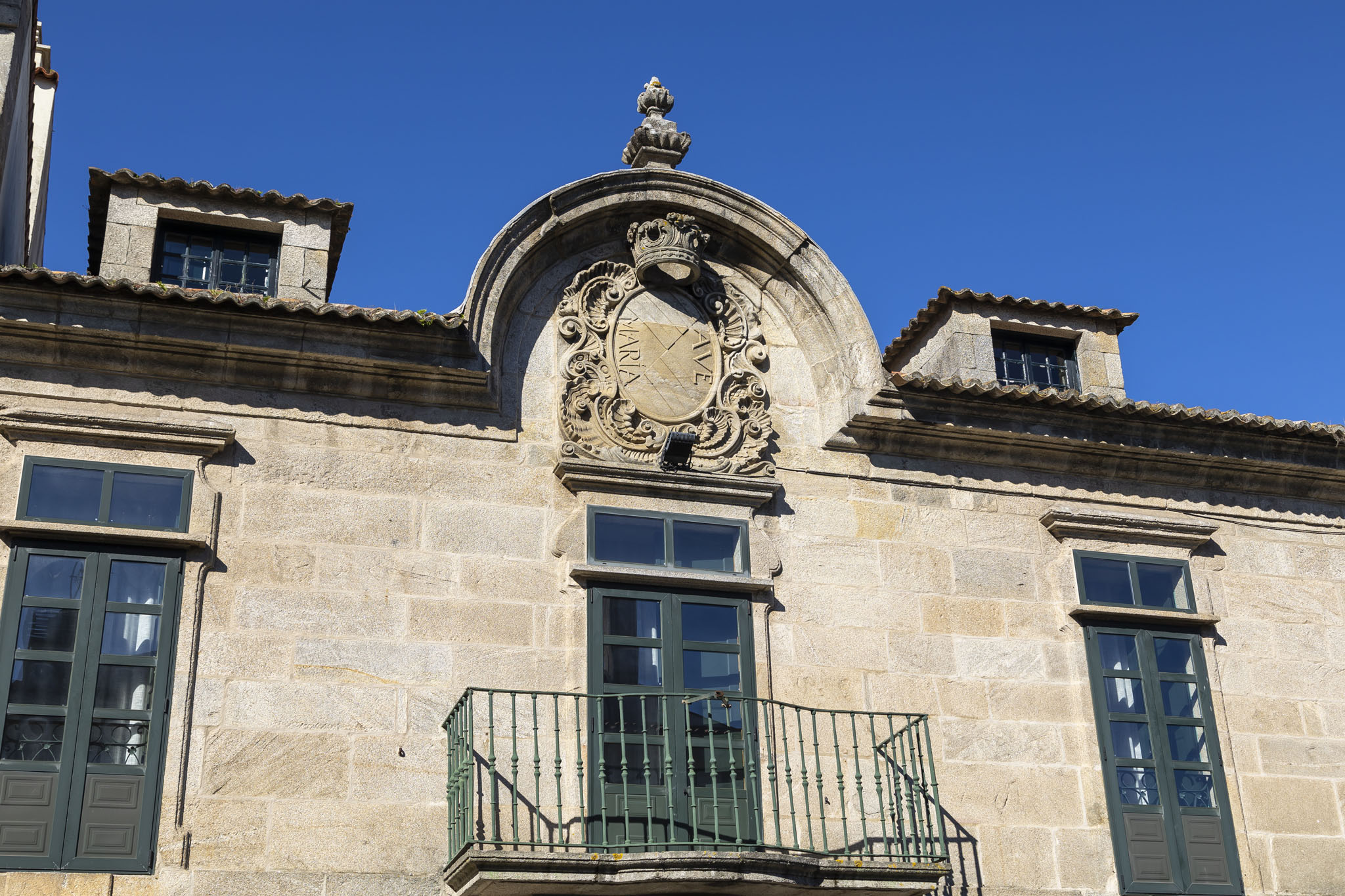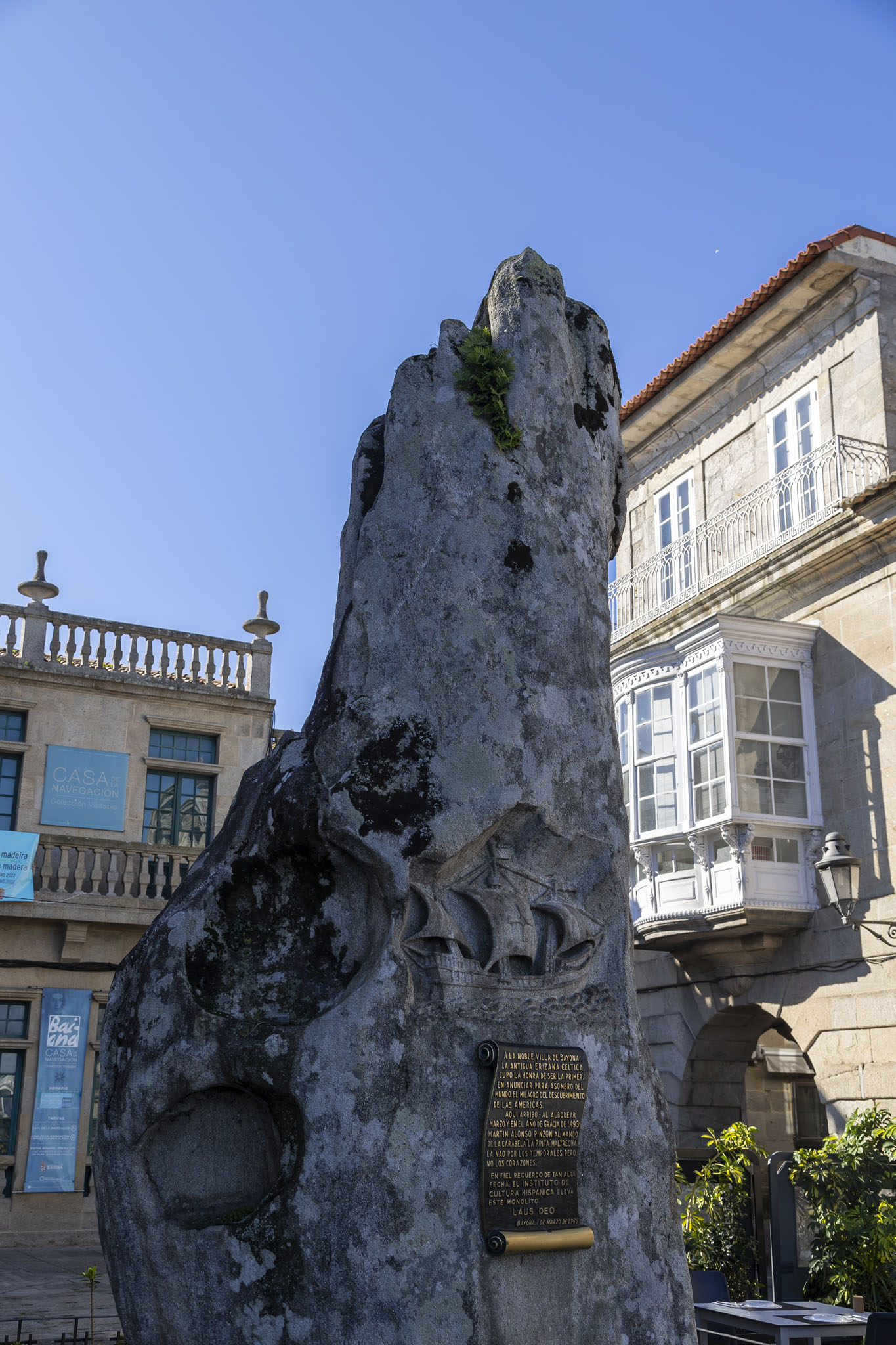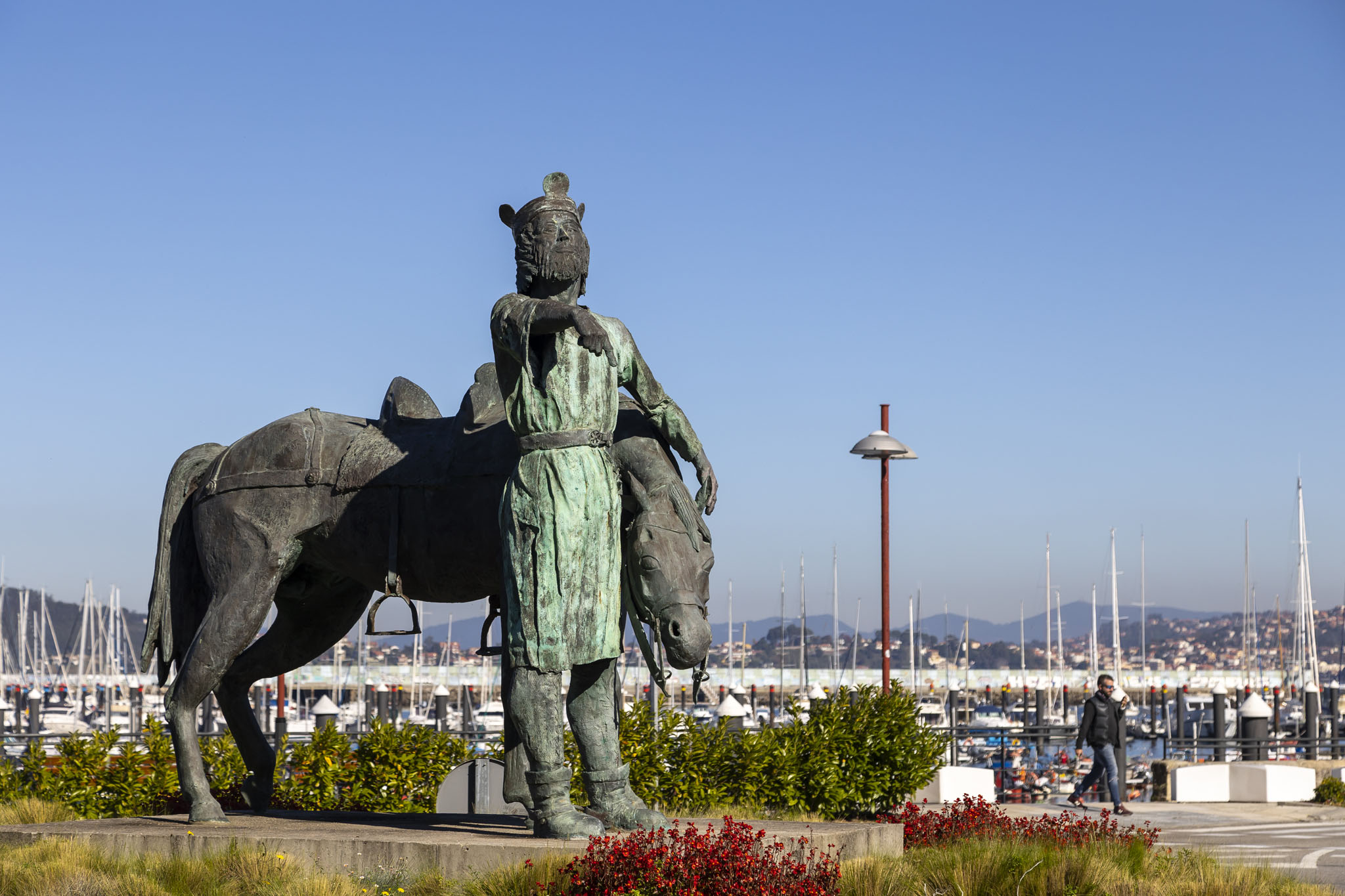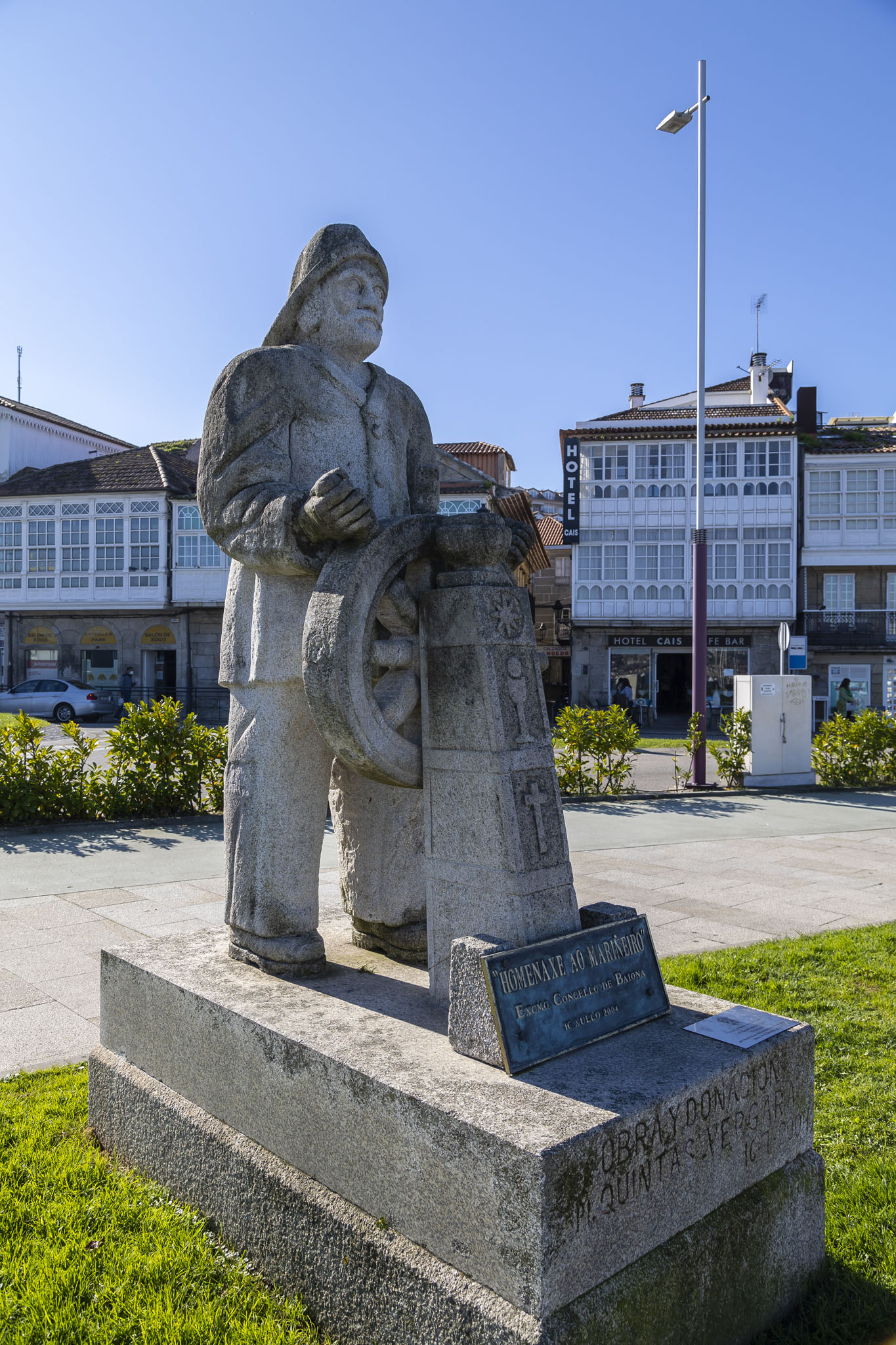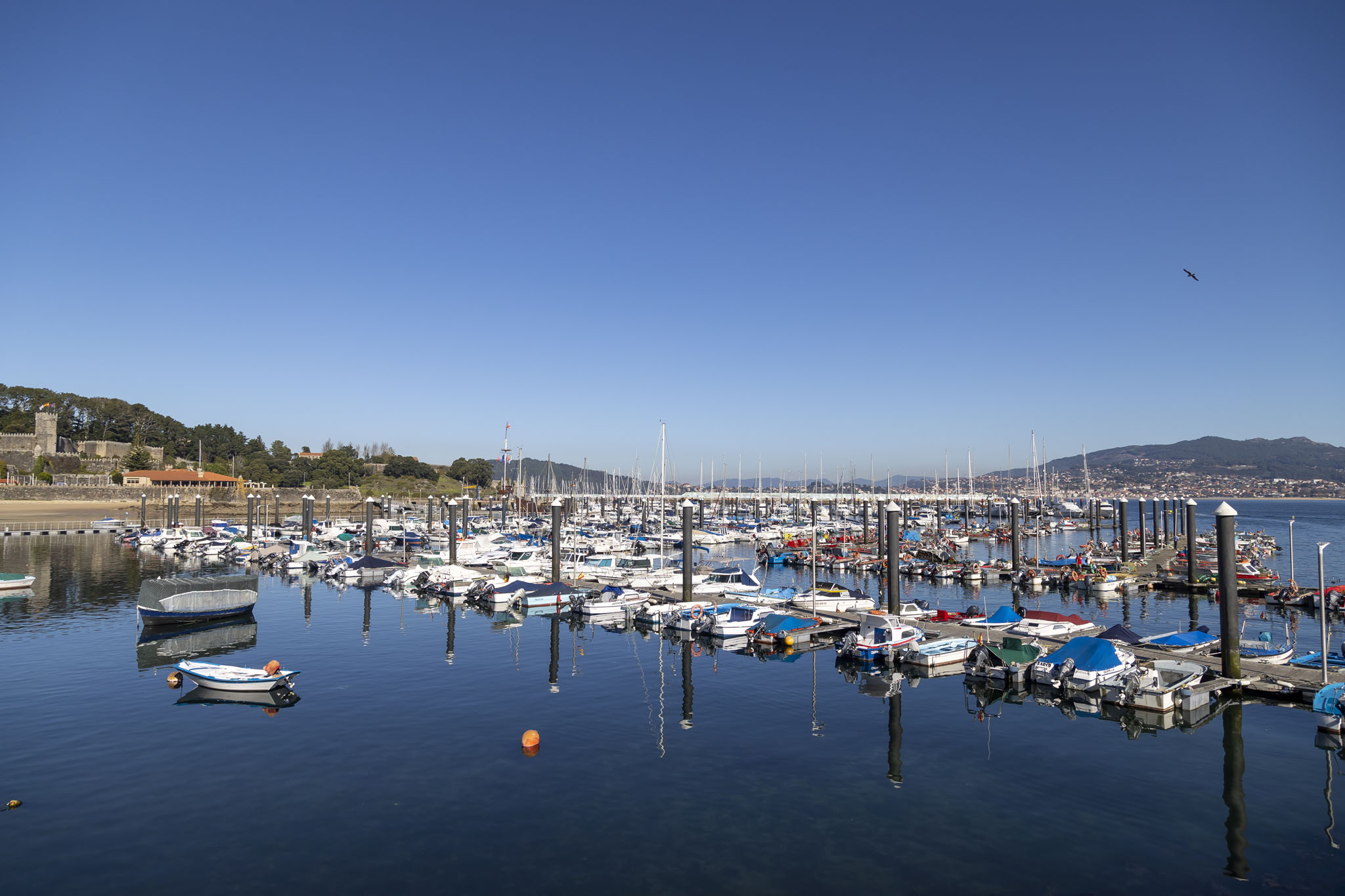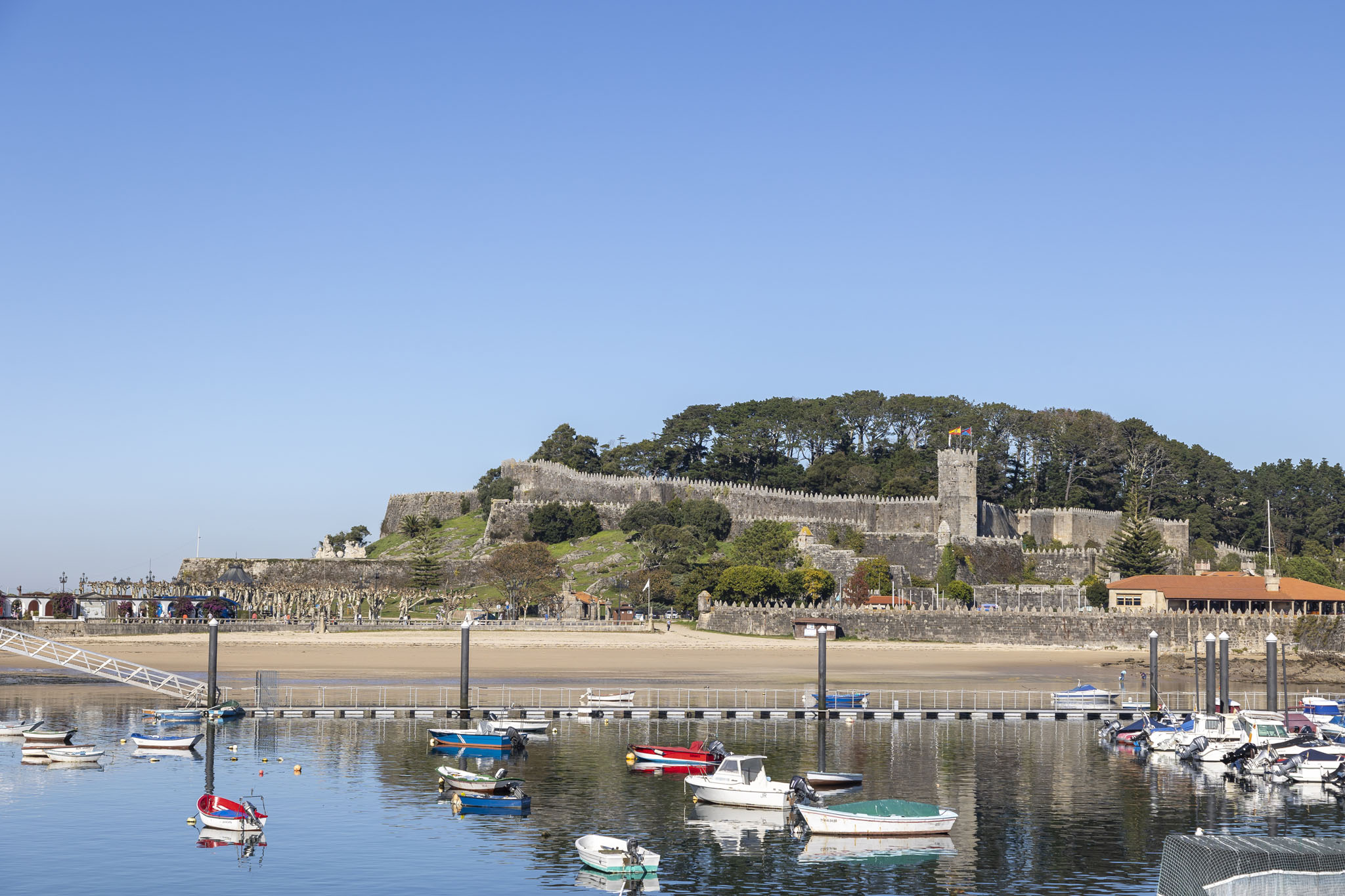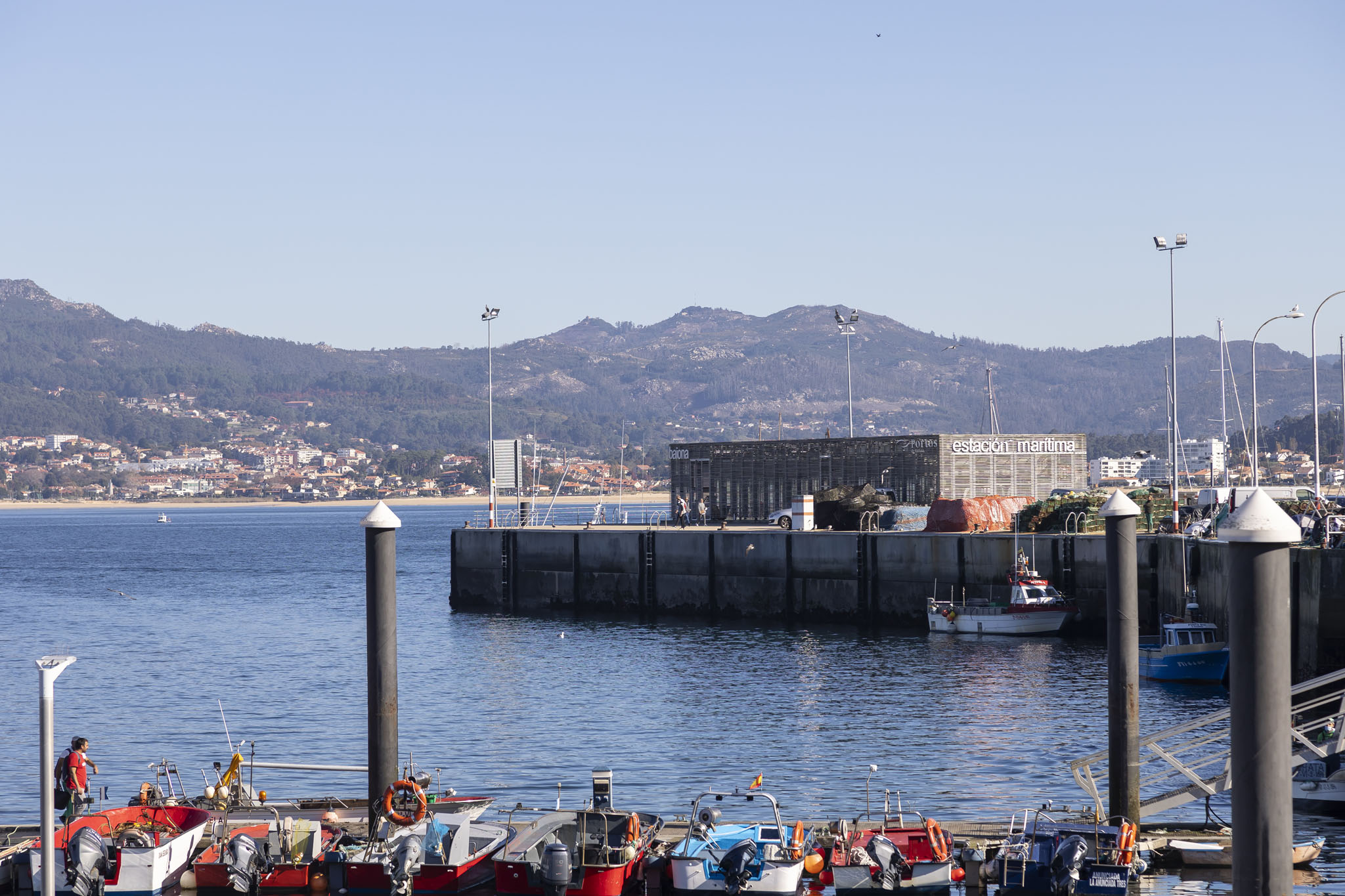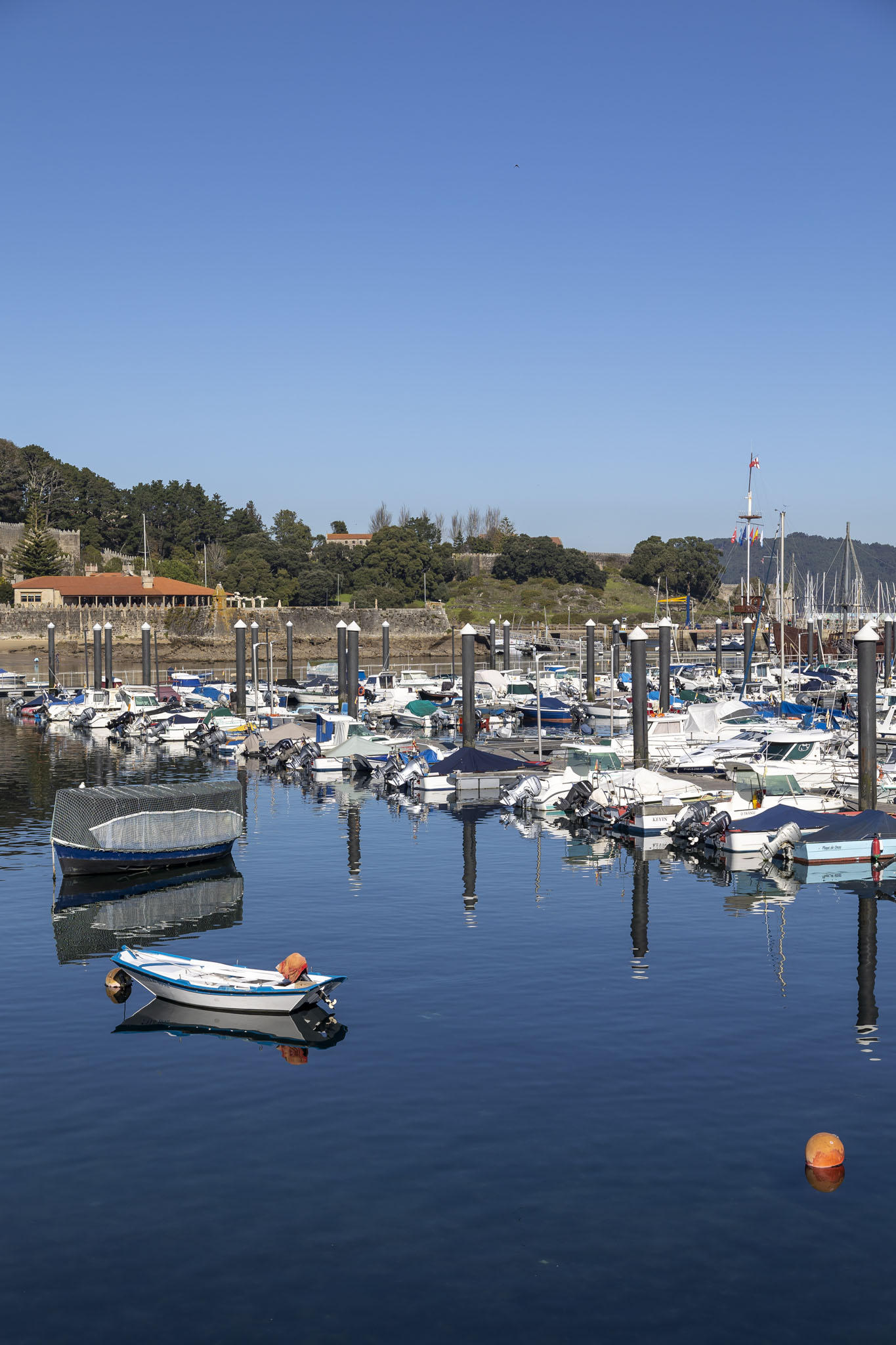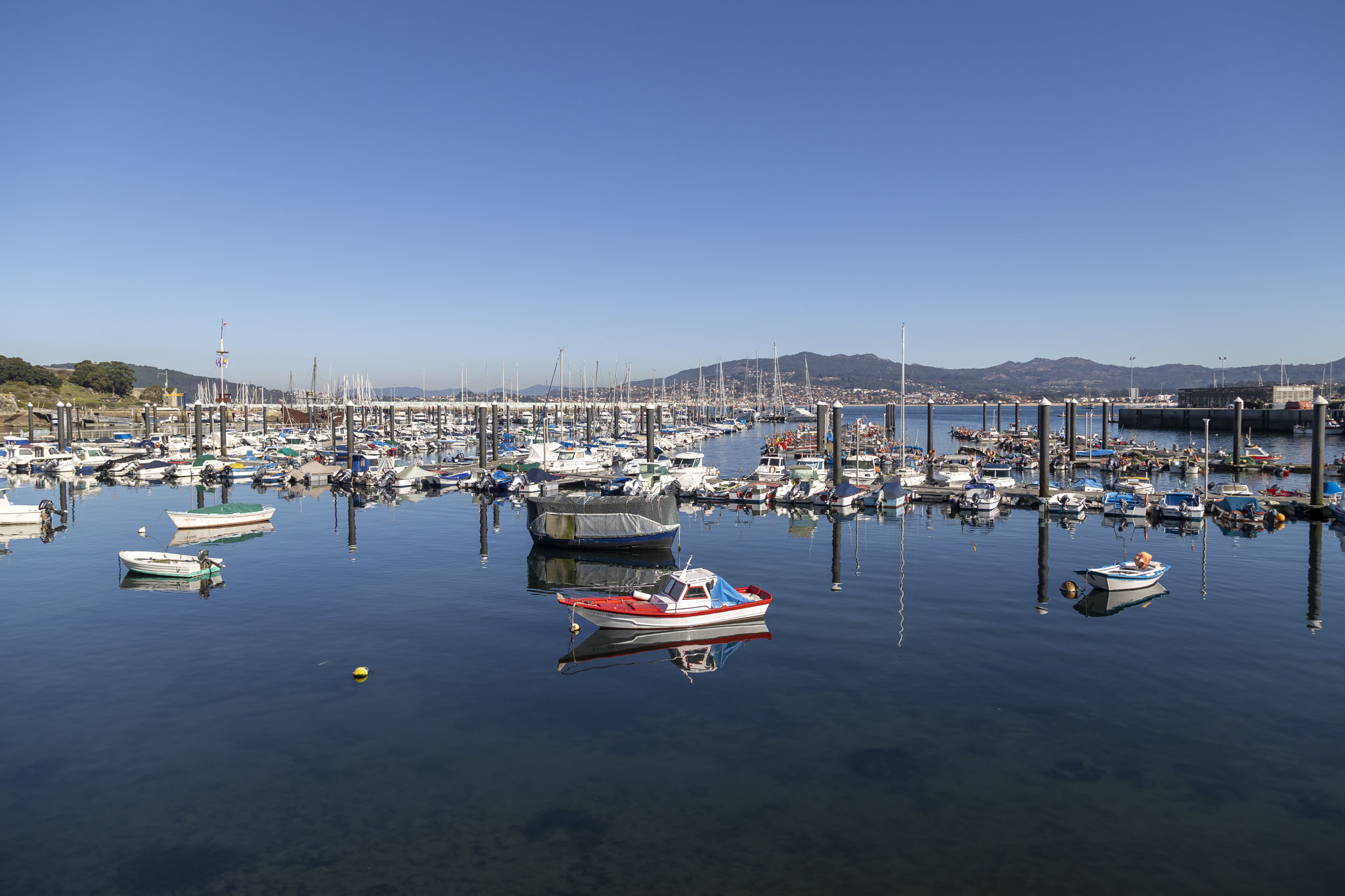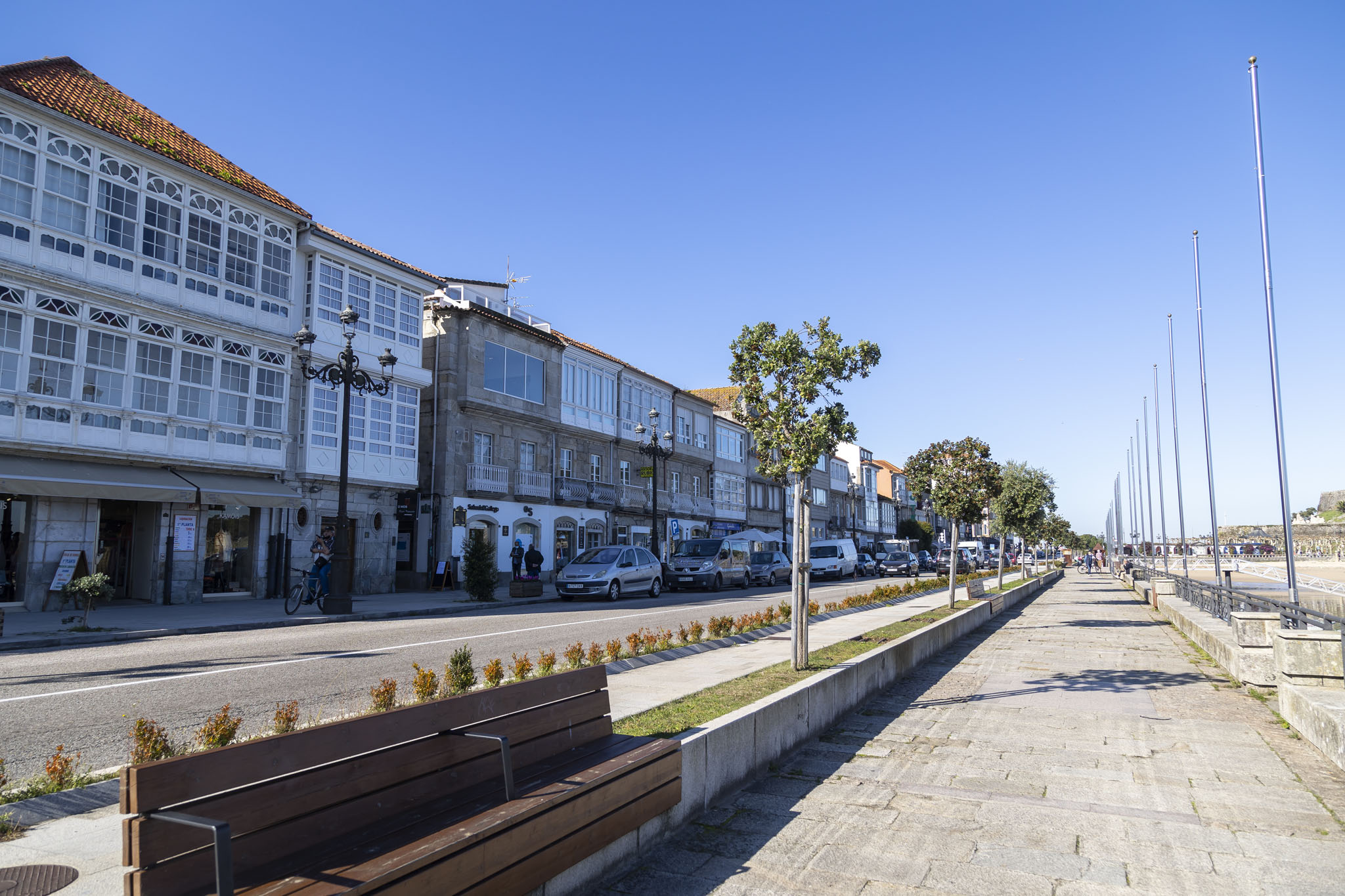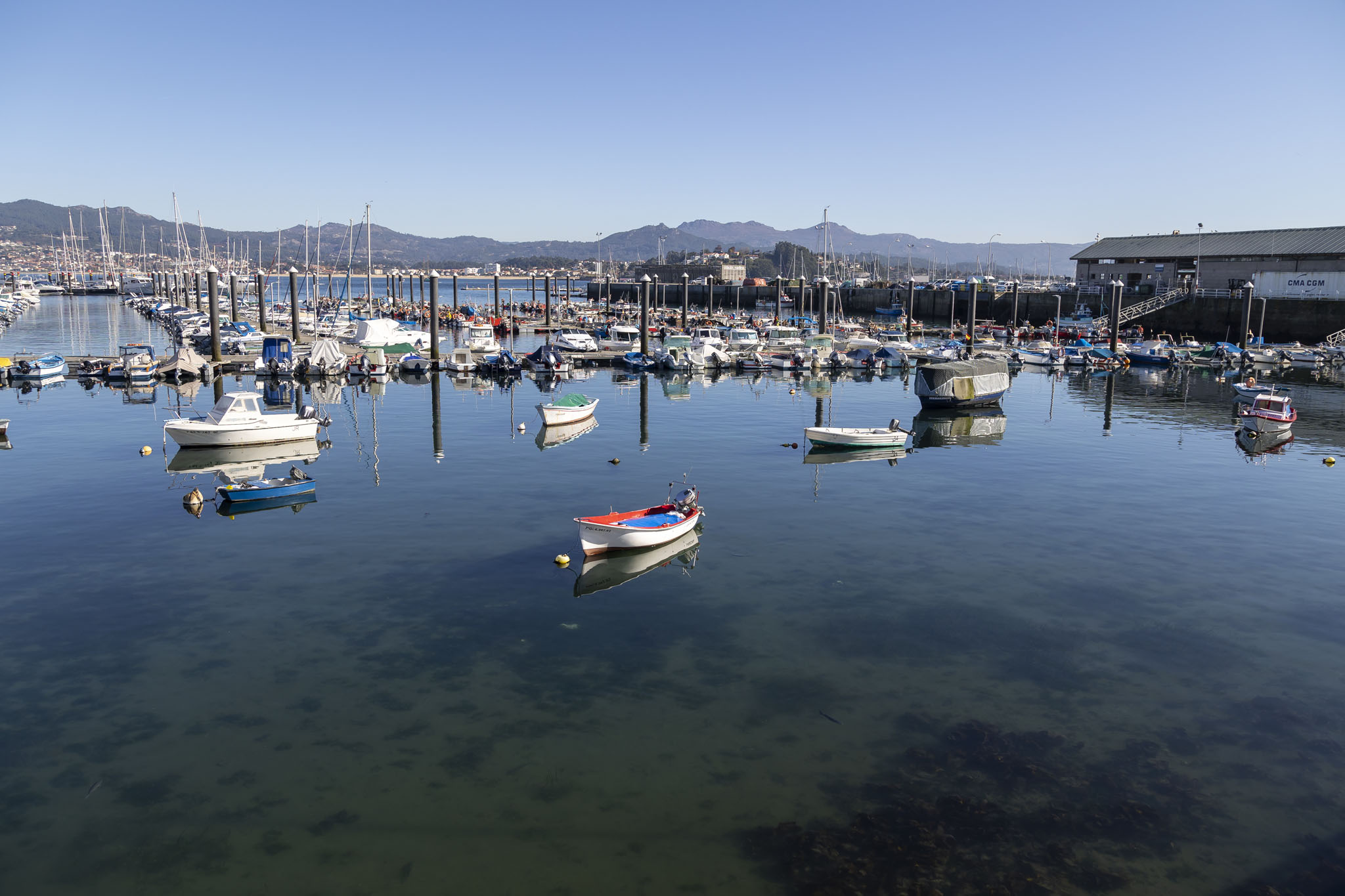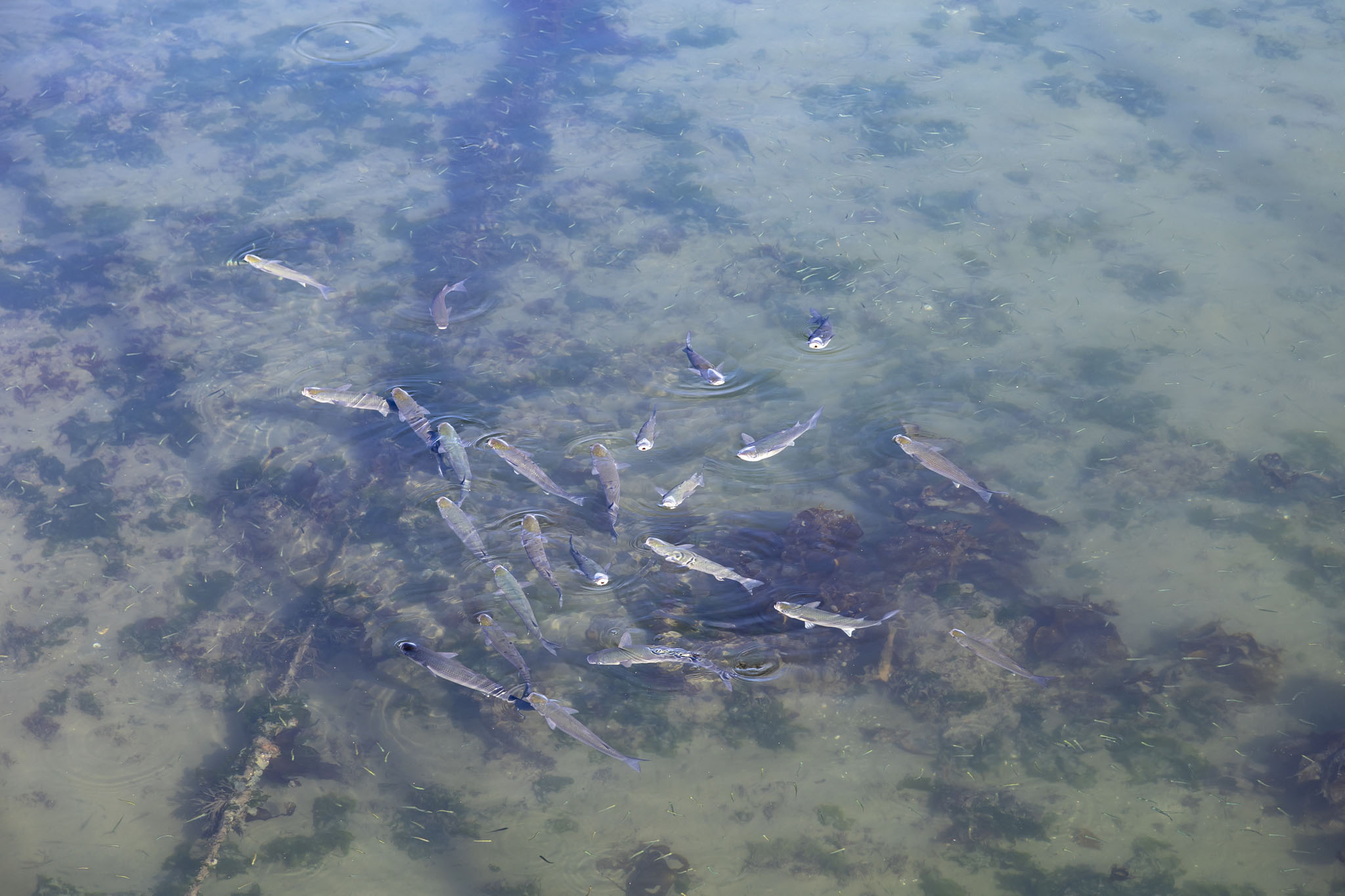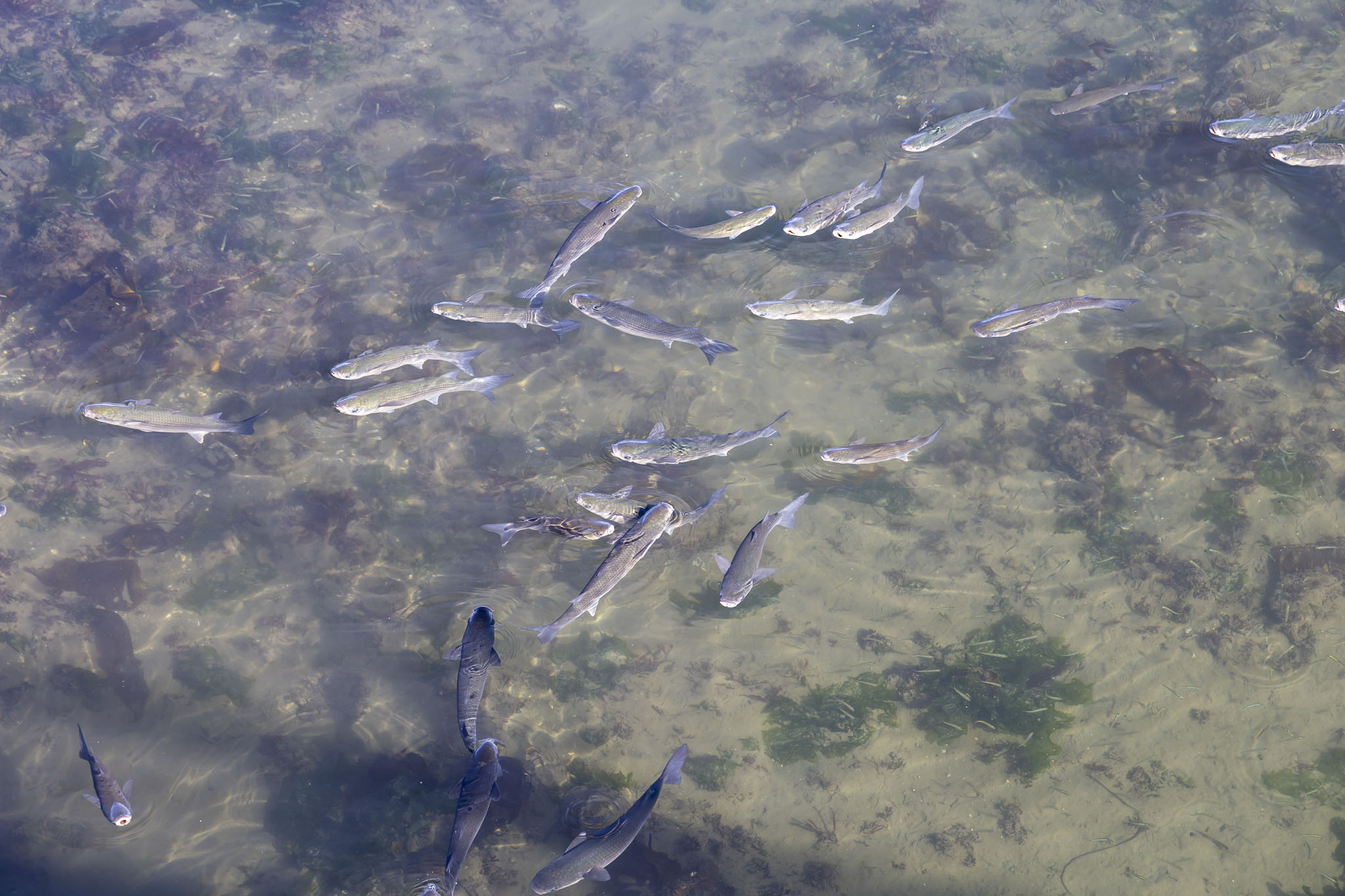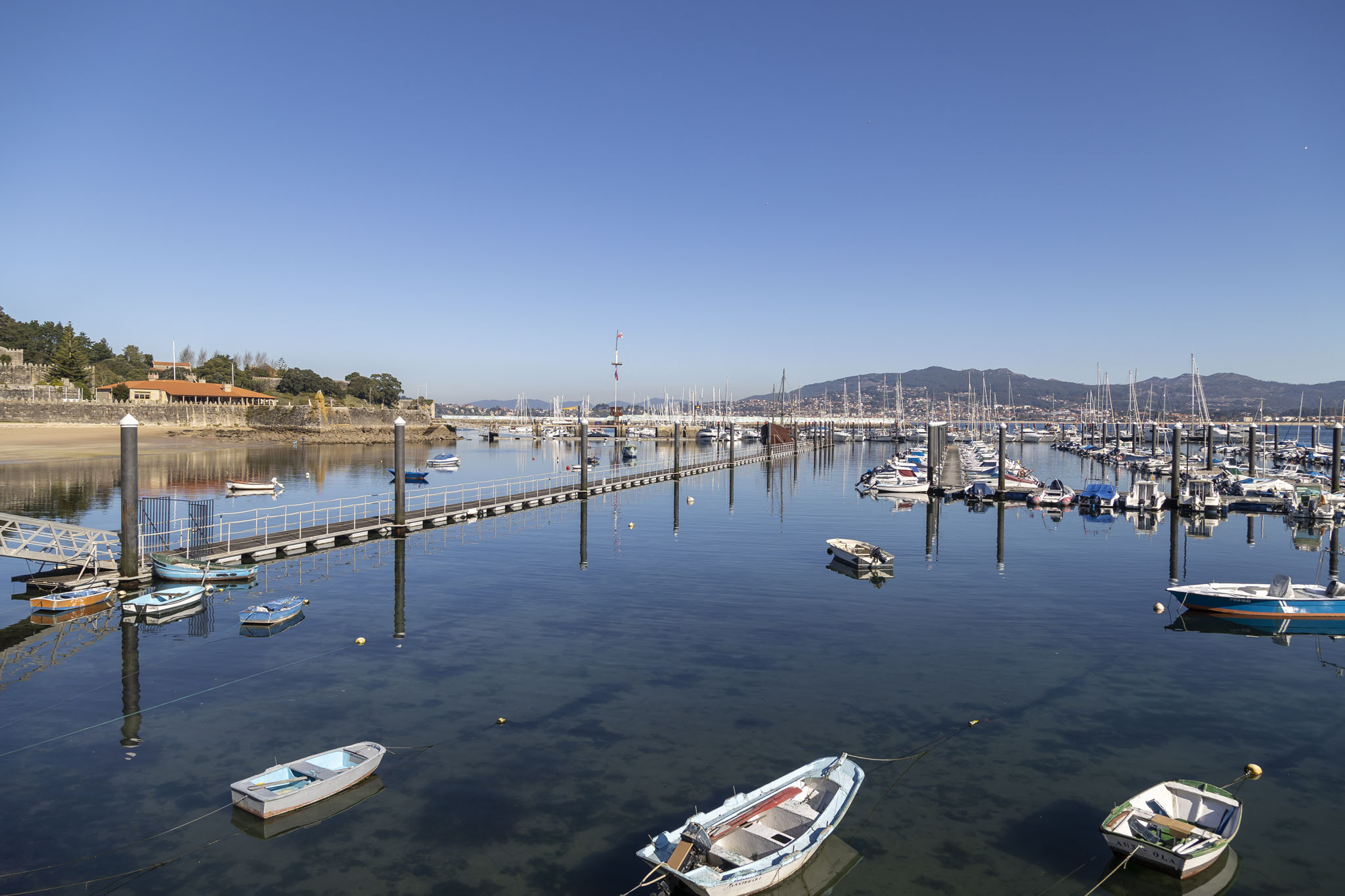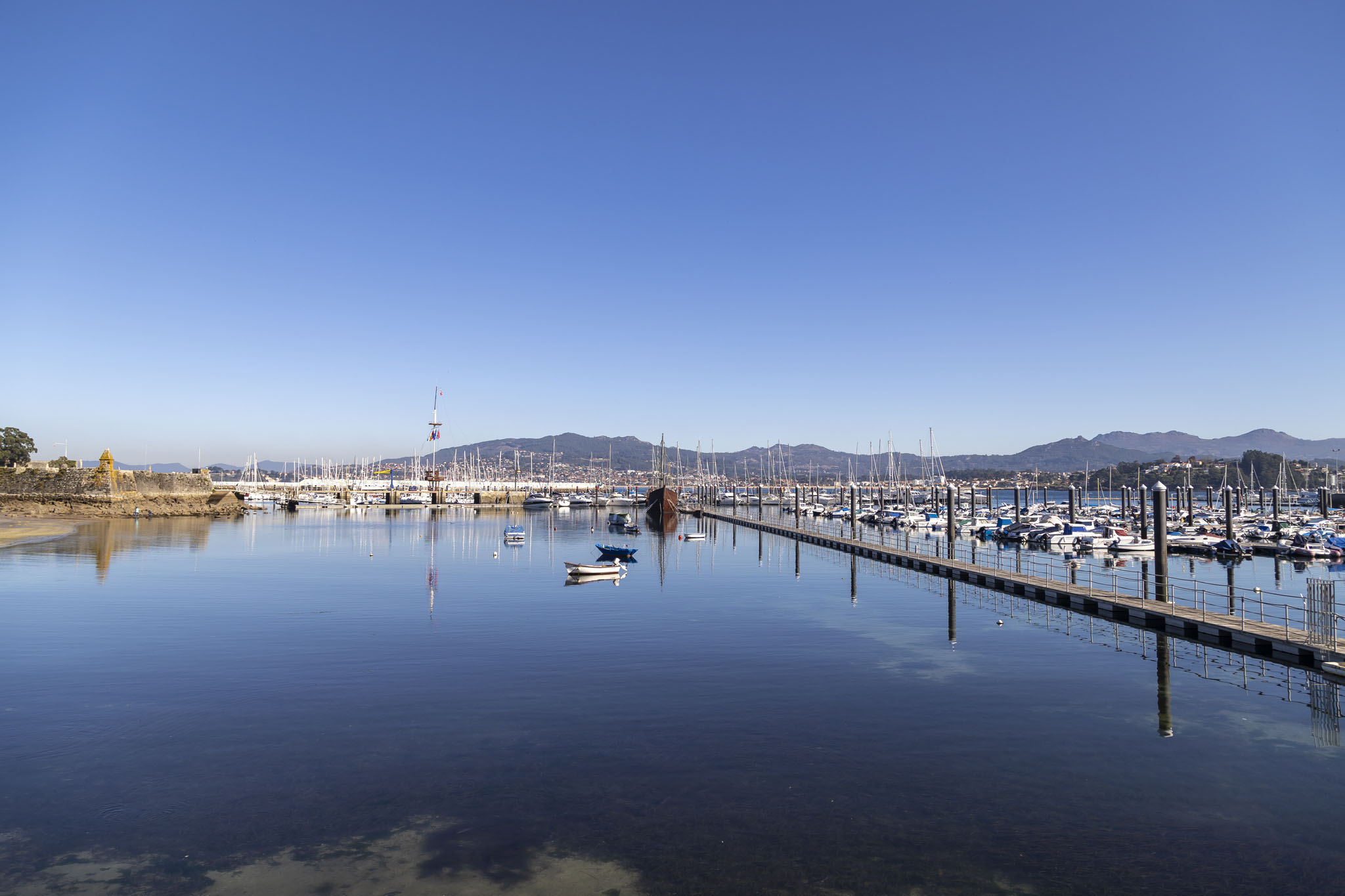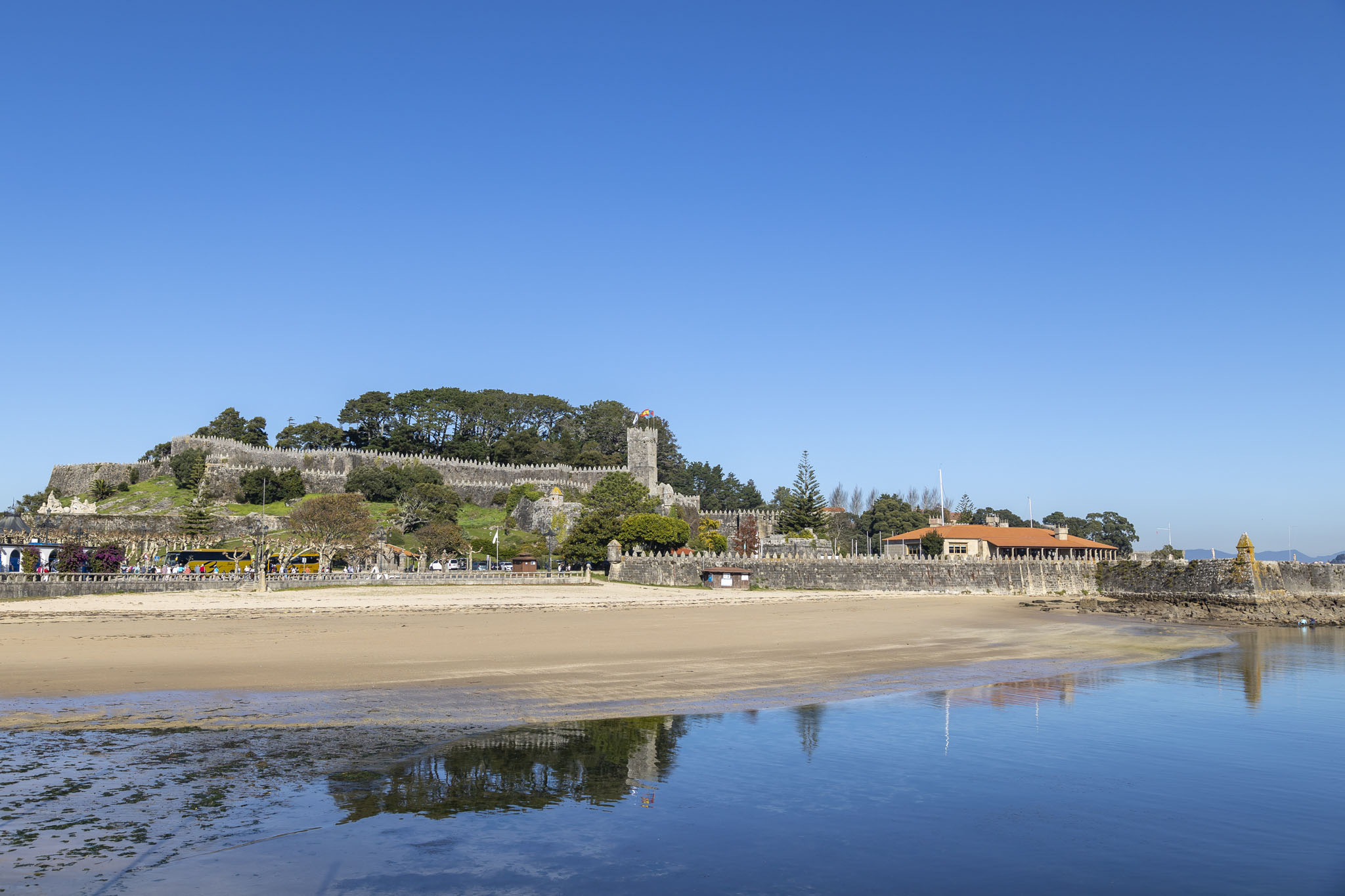You will already know that we were in Baiona, Galicia, Spain because you will already have read about our short visit to Monterreal Castle & Parador de Baiona as you’re the sort of person who refreshes this website daily in case I’ve been busy and the sort of person who reads travelogues in the order they’re published and the sort of person who doesn’t just happen upon pages on the internet after searching for them like some weirdo from the olden days. That’s three sorts of persons you are.
Following our snack and drink and views from the castle on its elevated bit of land we were led on foot down into the town of Baiona itself. The first thing we saw as we hit the golden sands of the pleasant-looking beach and marina beyond was what we took to be a miniature reproduction of an old sailing vessel. Well, it was a reproduction, but not a miniature. This was La Pinta, and if the name seems familiar to you then it might be because you remember that Christopher Columbus took three ships on his voyage to “discover” the New World in 1492. In fact, it was La Pinta that first sighted land on that trip, and it was La Pinta that first returned to Europe after the expedition. And its landing point in Europe was Baiona, hence the reproduction ship, so Baiona was the first place in Europe to learn of Columbus’s successful voyage.
La Pinta would prove to be Baiona’s main claim to fame so it would crop up again on this tour, but a little more looking around the town first, starting with the area opposite the beach. I’d tell you what trees these were except I know almost nothing about plants. I don’t even have great confidence they’re trees. I probably should have wandered across to the signs in front of them but I didn’t want to stray too far from our guide and the rest of our group who were listening to her pointing out the small ship (26 men on that tiny thing crossing the Atlantic twice!) and the commemorative tiles on the wall.
Our guide led us on a short walk towards the town square.
The austere church that ran along the northern side of the tow square was the Chapel of Mercy. Originally built in 1595 (apparently, and despite the date on the plaque) by the order of King Phillip II, the building was rebuilt sixty years later in the spot where it stands today. Inside there stands a crucifix made from gold from Mexico… but we had to take the guide’s word for that as we weren’t allowed in.
Decorated with flags on the eastern side of the square and facing the main square itself was the village hall. This building dates from the middle of the eighteenth century but was only bought and turned into a civic building in 1942. The square was a pleasant enough space though we were not given (or I didn’t hear) what uses it typically served during the year, and was notable for the monochrome representation of the Baiona seal on the flagstones.
So that was pretty much our tour. As you can see, not a lot, and yet, strangely, and very irritatingly, it seemed to take a long time to explain this not a lot.
“You can have some free time now,” our guide said, which was good. “Let us meet back opposite the Pinta in… twenty minutes.” Oh. We weren’t the only ones to suddenly be thinking “Well, that’s clearly not enough time to see anything at all.” I know this because it was voiced quite loudly by several people. We’d rather hoped we could have had half an hour exploring, maybe another half an hour to locate a bar and spend some money locally, but no.
So, off we set in a random direction just to see if anything grabbed our attention within a few minutes before we’d have to turn around and head back. There was no time to really plan or look anything up so we decided on a small circle that should take us out to the shoreline by the marina fairly quickly and which would allow us to see and head towards the meeting point, and ensure nobody left without us if we were a little late (but we’re never late).
Our random walking route brought us to the Arrival Monolith. Even if you don’t speak Spanish – and we don’t – then the carved symbol of the ship on this large stone’s front should give away that the arrival being commemorated is that of La Pinta once more. The stone is a fairly recent addition to the beachfront area of Baiona, only being erected in 1965, but it’s still a fairly impressive lump of nature and skilled artistry to admire.
A few sculptures were nearby. Baiona was granted a royal charter in 1201 by Alfonso IX and in 2001, to celebrate the 800th anniversary of this event, a statue was placed on a roundabout with his finger pointing to the ground and his horse looking in the same direction as if to say “What the hell is a roundabout?” It’s what he would have wanted. Over the road from that, dating from a few years later, and sculpted by Manuel Quintas Vergara, was the monument to sailors.
And that’s about all we had time to see in Baiona. We completed our visit to the town with a walk along the marina leading back towards the castle and the sandy beach area where we’d meet the bus to take us back to the ship in Vigo. We were very impressed with just how clean the water was (we’re from England where clean water is but a distant memory to many of us who can remember when the water companies actually did their jobs instead of lining their pockets) and with how many fish there were.
Baiona is a lovely little town with some interesting history. You can see how pretty it was for yourself, and that was helped, of course, by some glorious weather. It likely has far more to see and do than we got to see on this tour. We do like tours when we cruise because we like to get a flavour of things before considering if they’re worth a more in-depth look at some future date, but our time here was so fleeting we barely got a sniff of a flavour. I don’t like recommending places because we all have different tastes and expectations, but I will say that this particular excursion left us feeling a bit disappointed with its duration, particularly with the lack of free time to explore, and I know we weren’t alone in that.
In the next post in this cruise travelogue series I’ll cover the departure from Vigo, and that will leave just one more post to go through the evening aboard, the following day at sea, and some final thoughts about this late 2021 P&O cruise.
